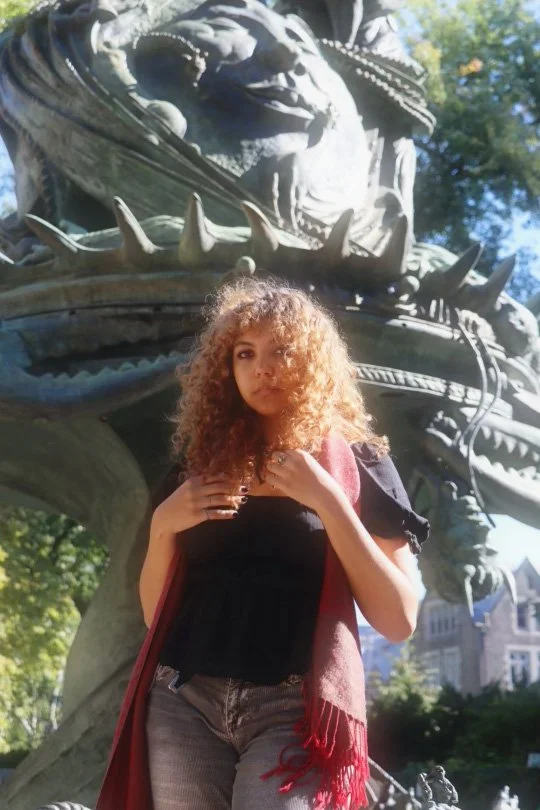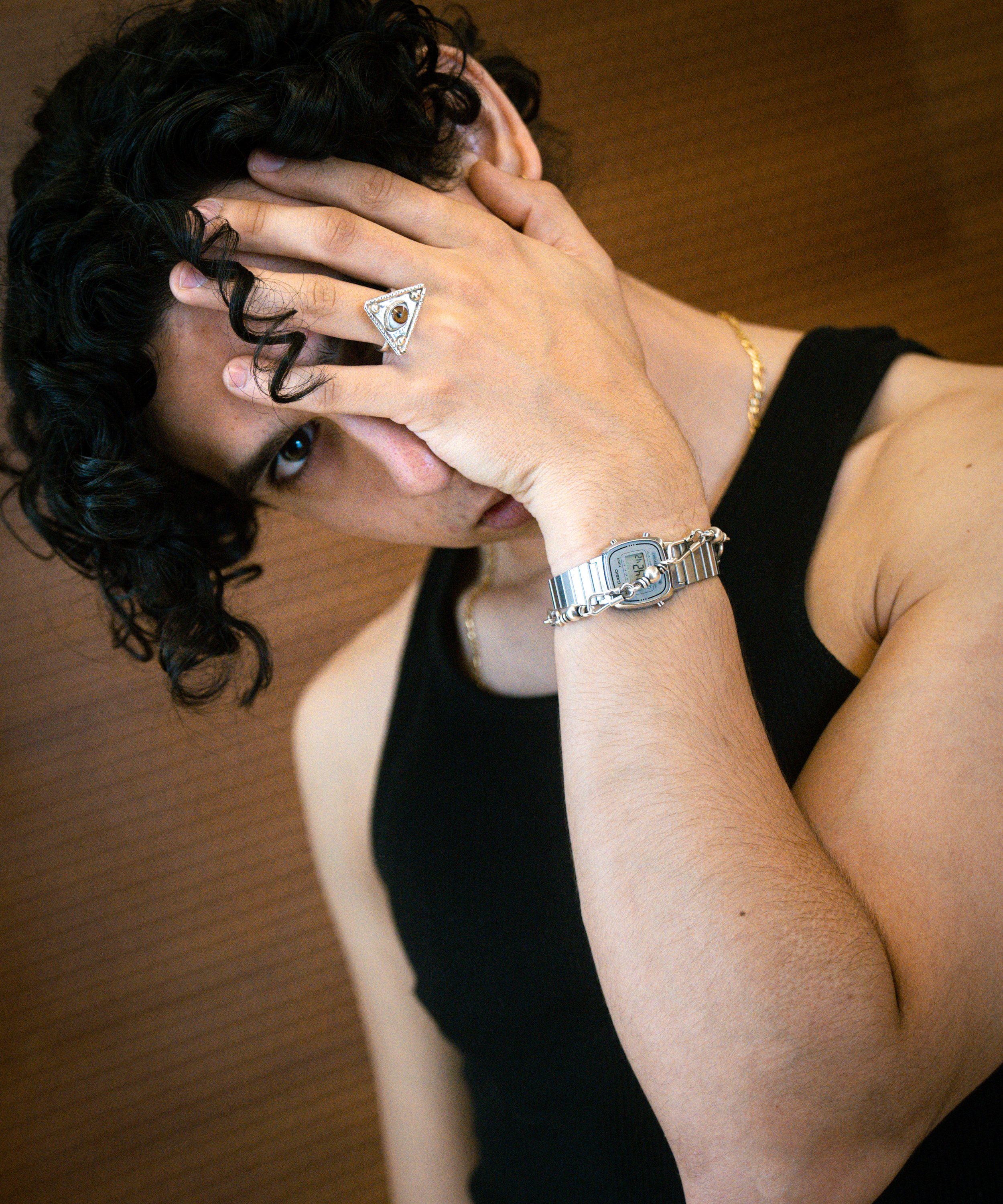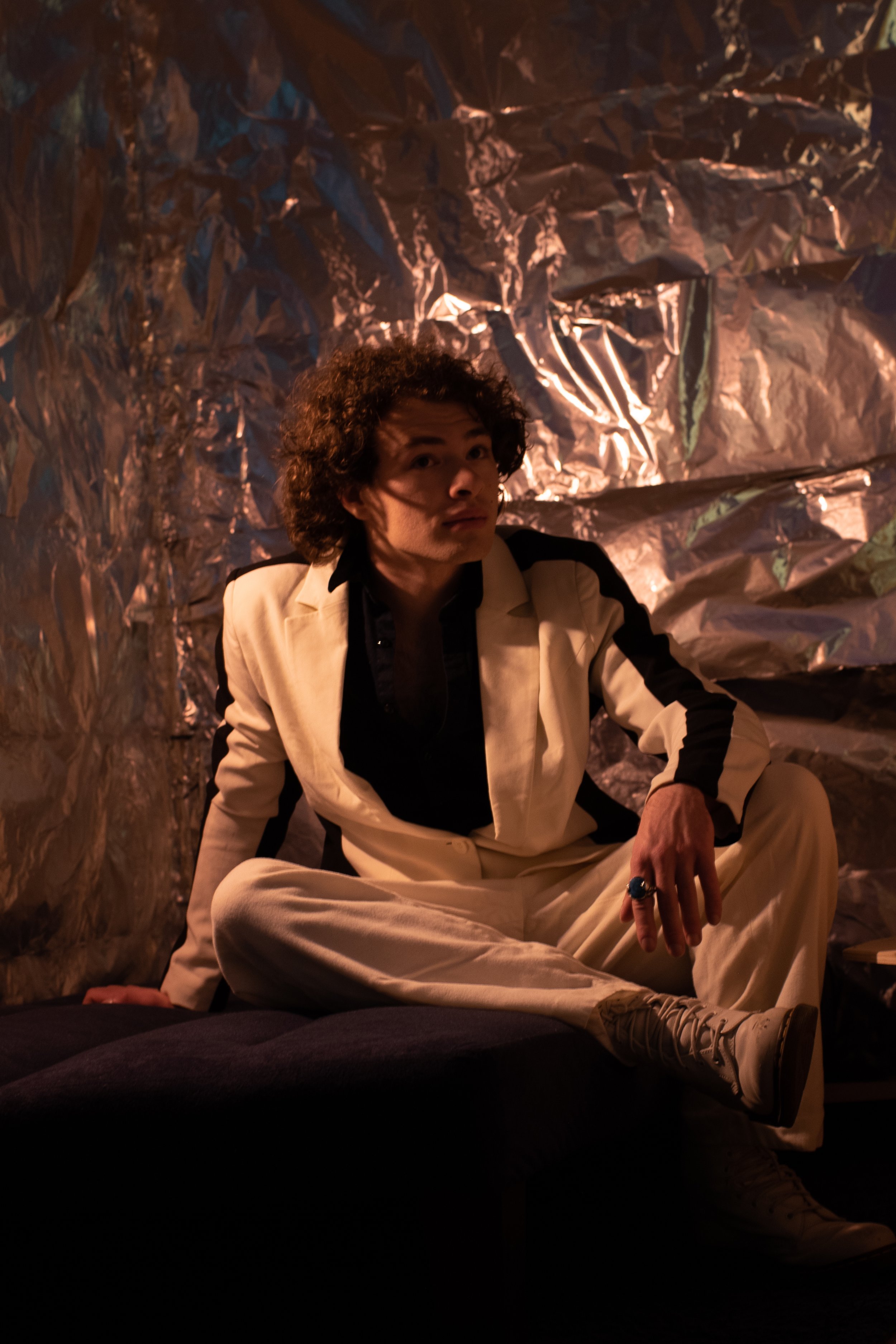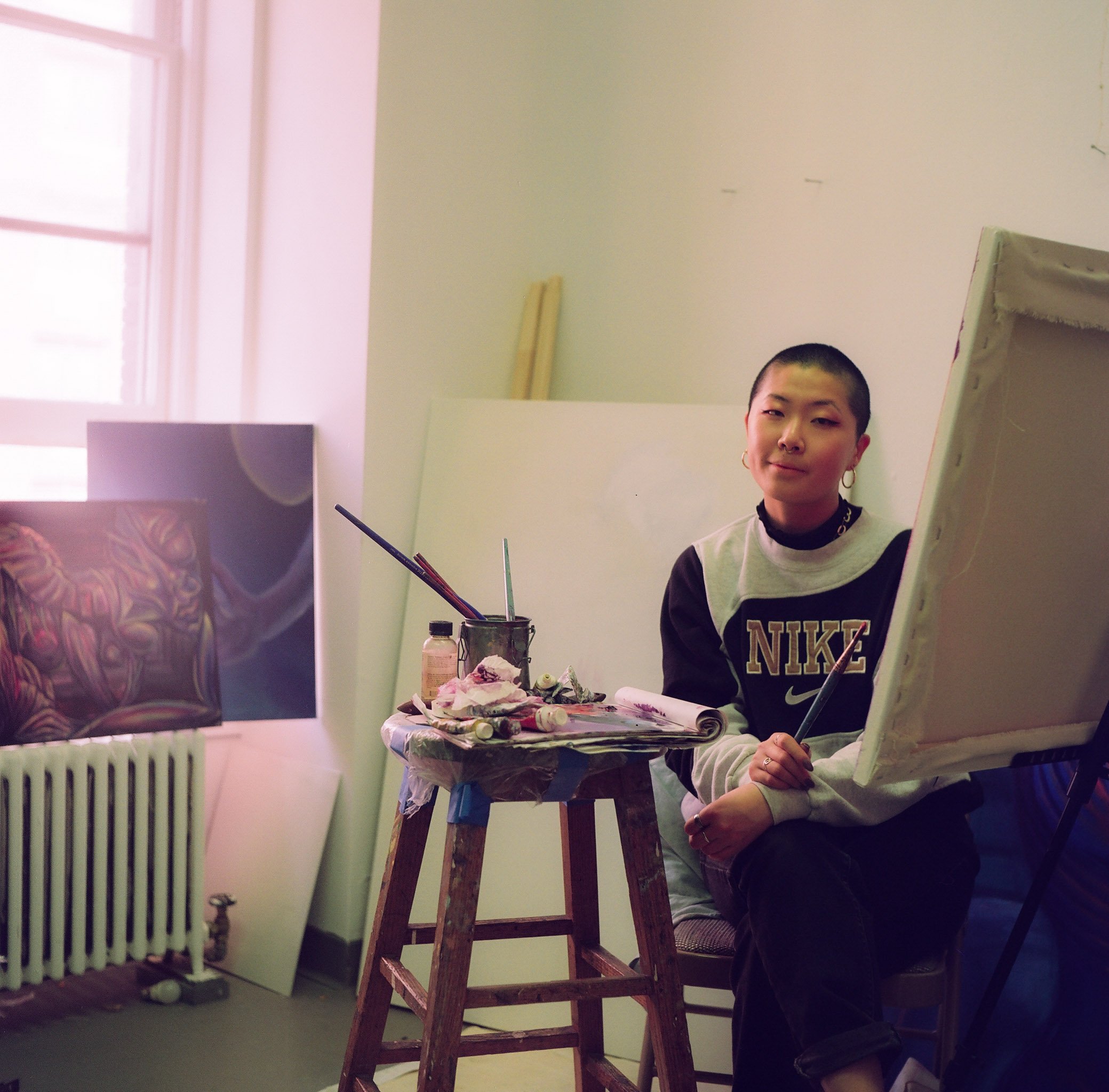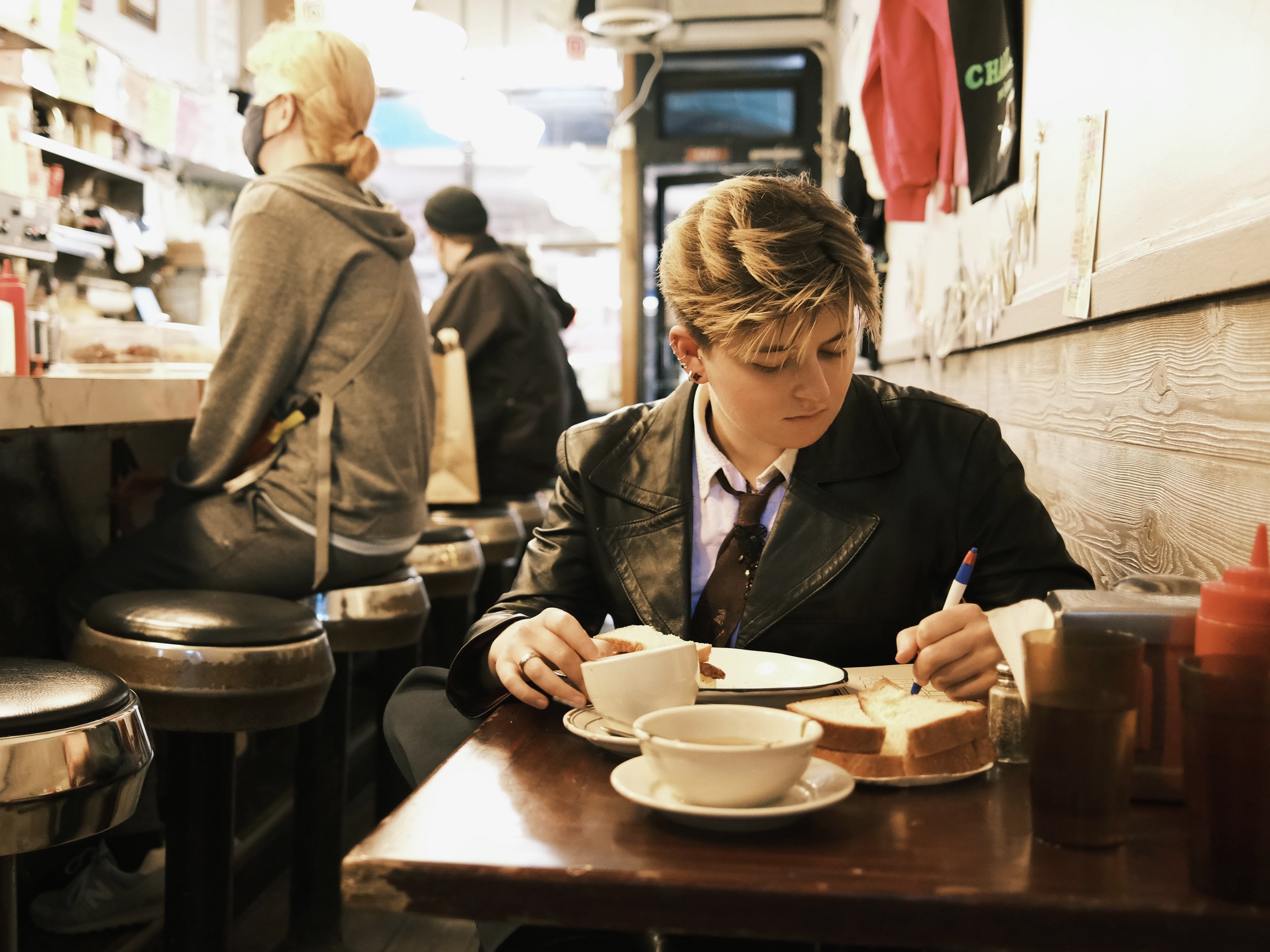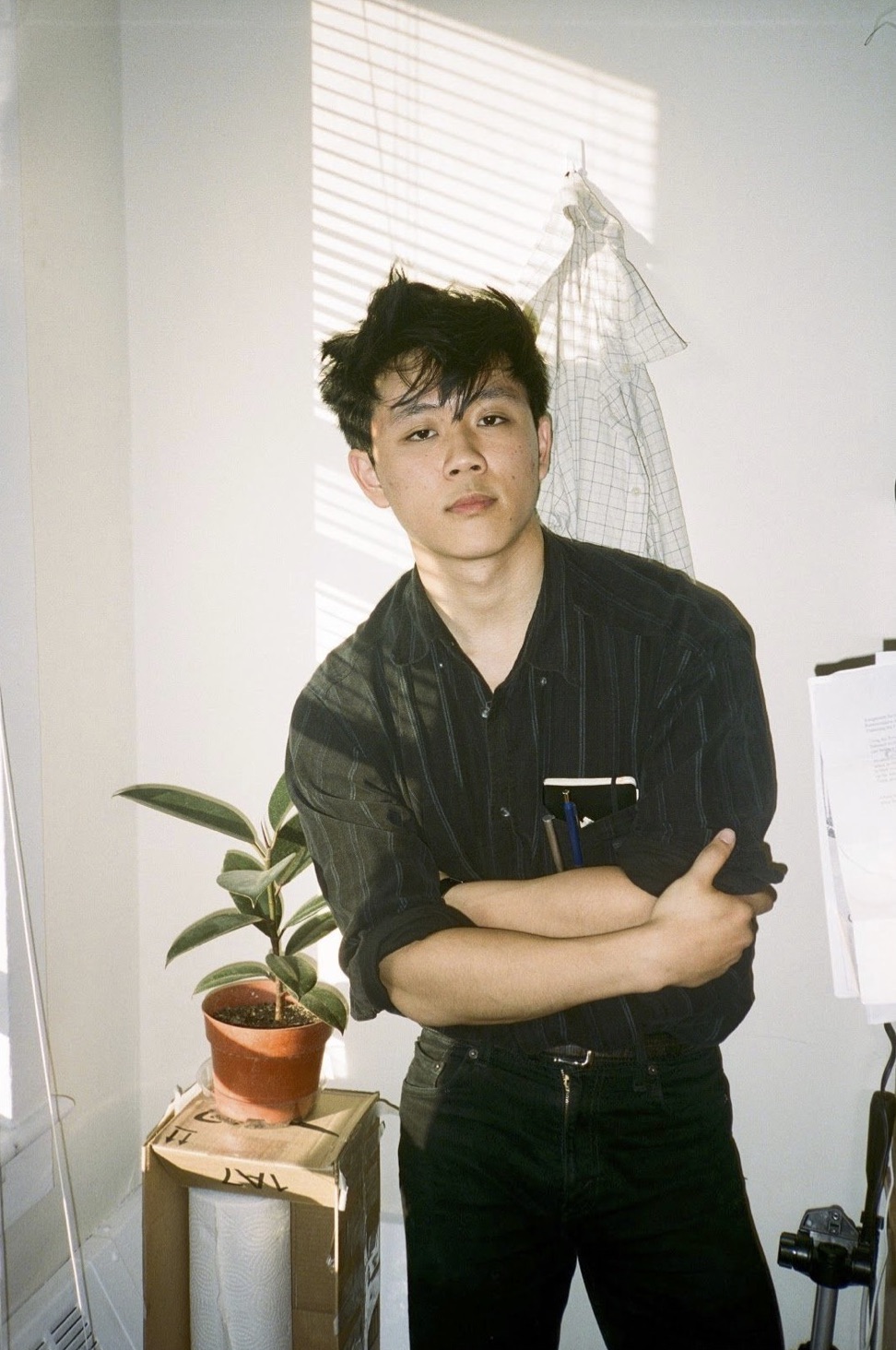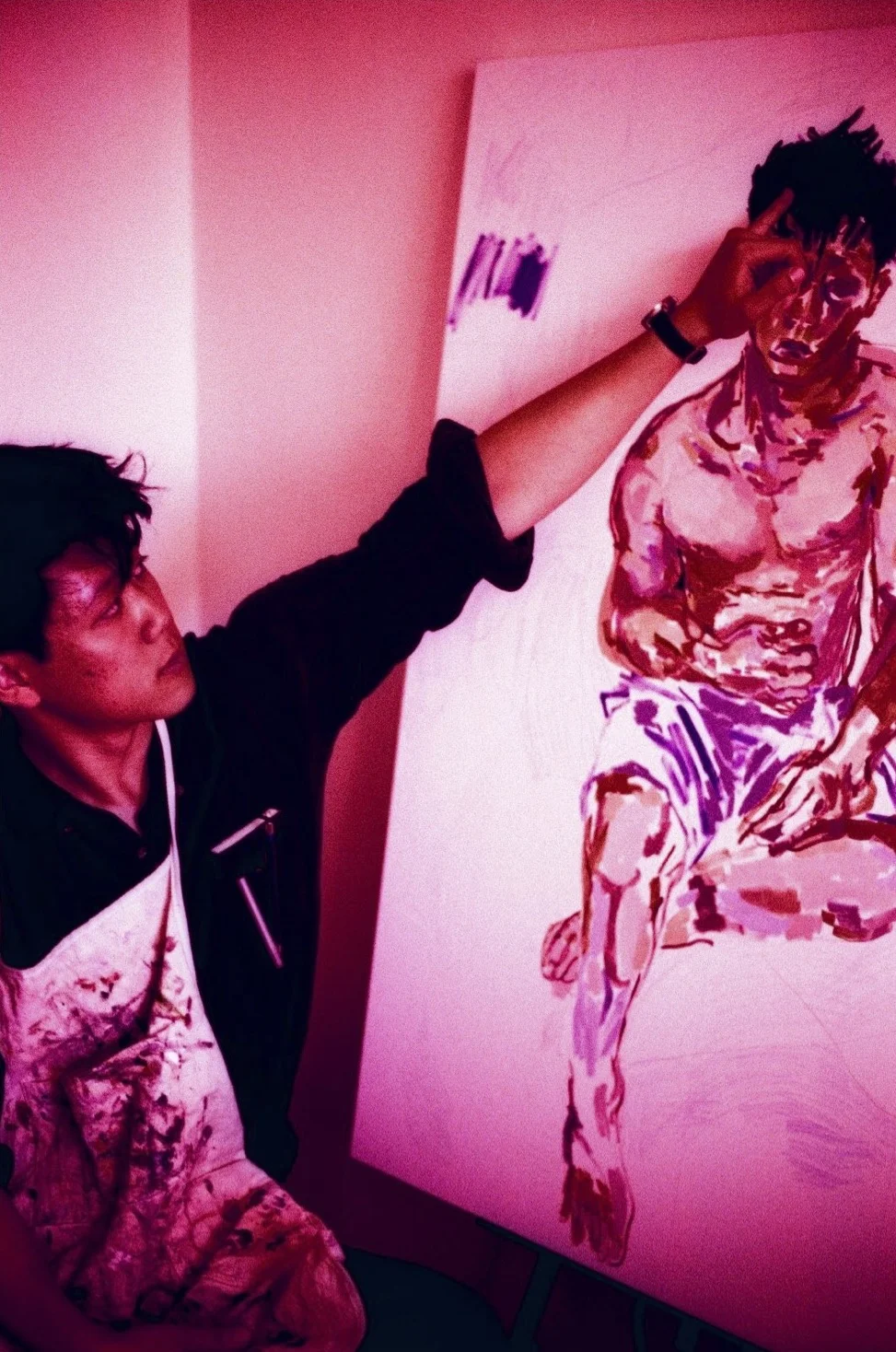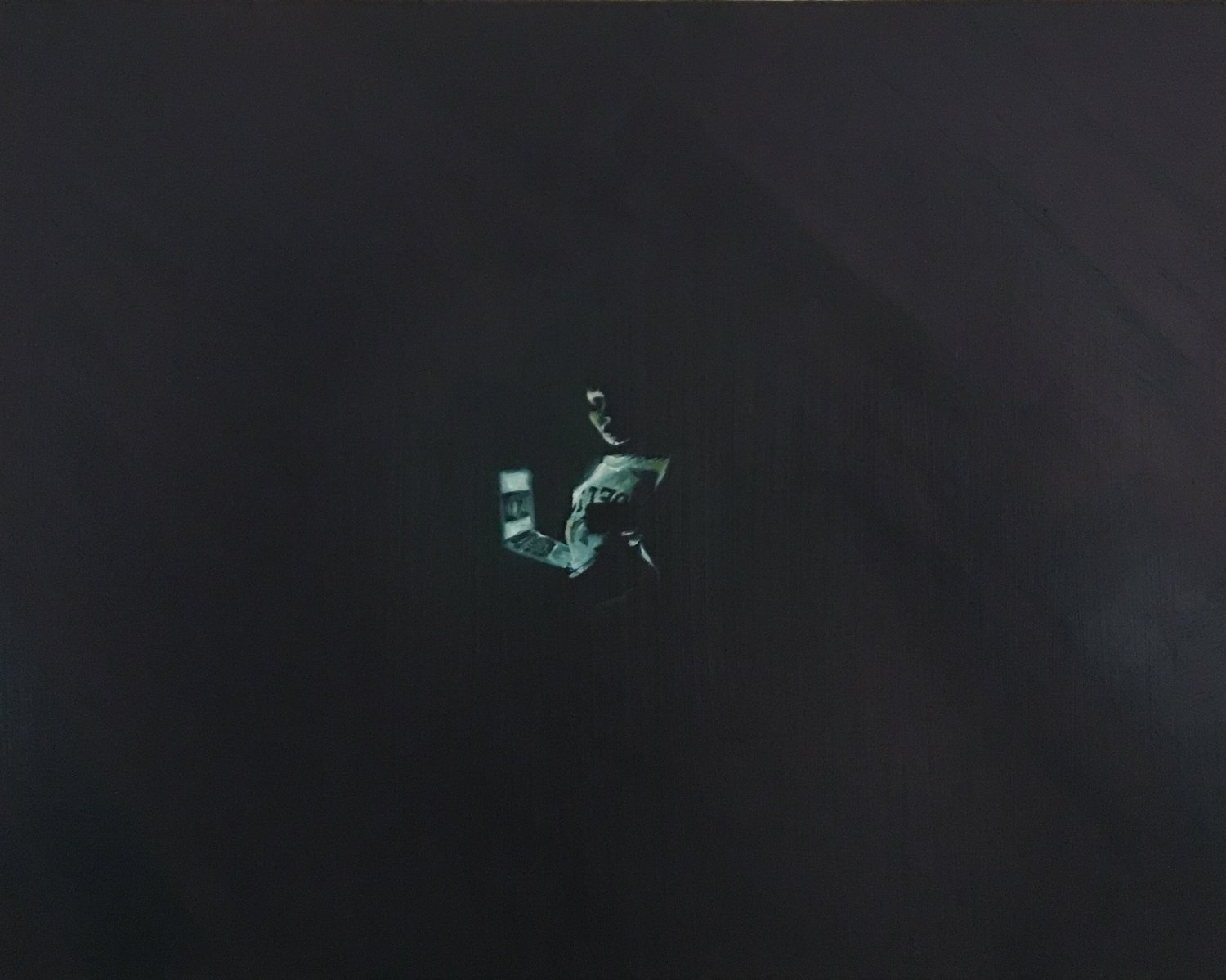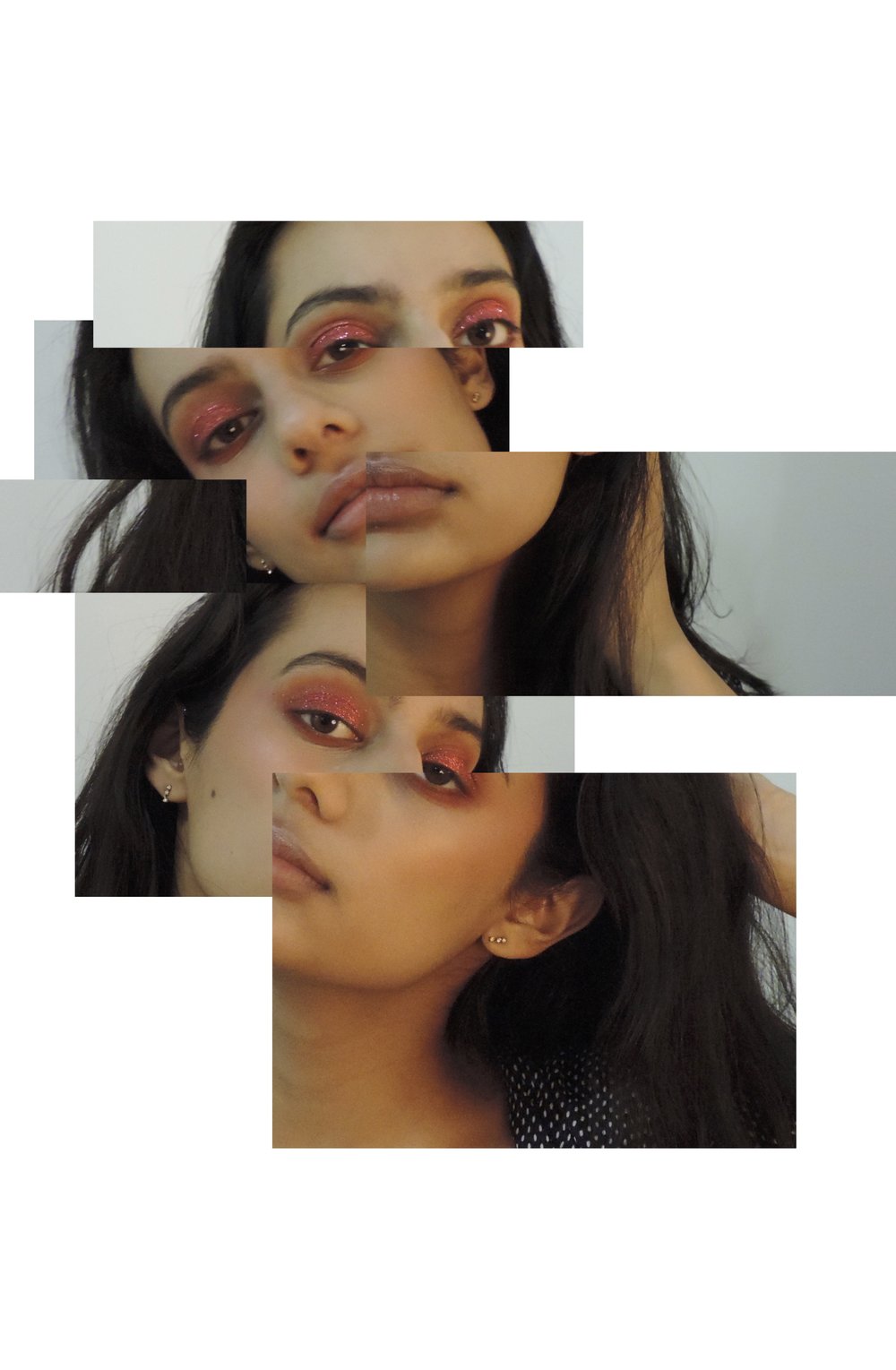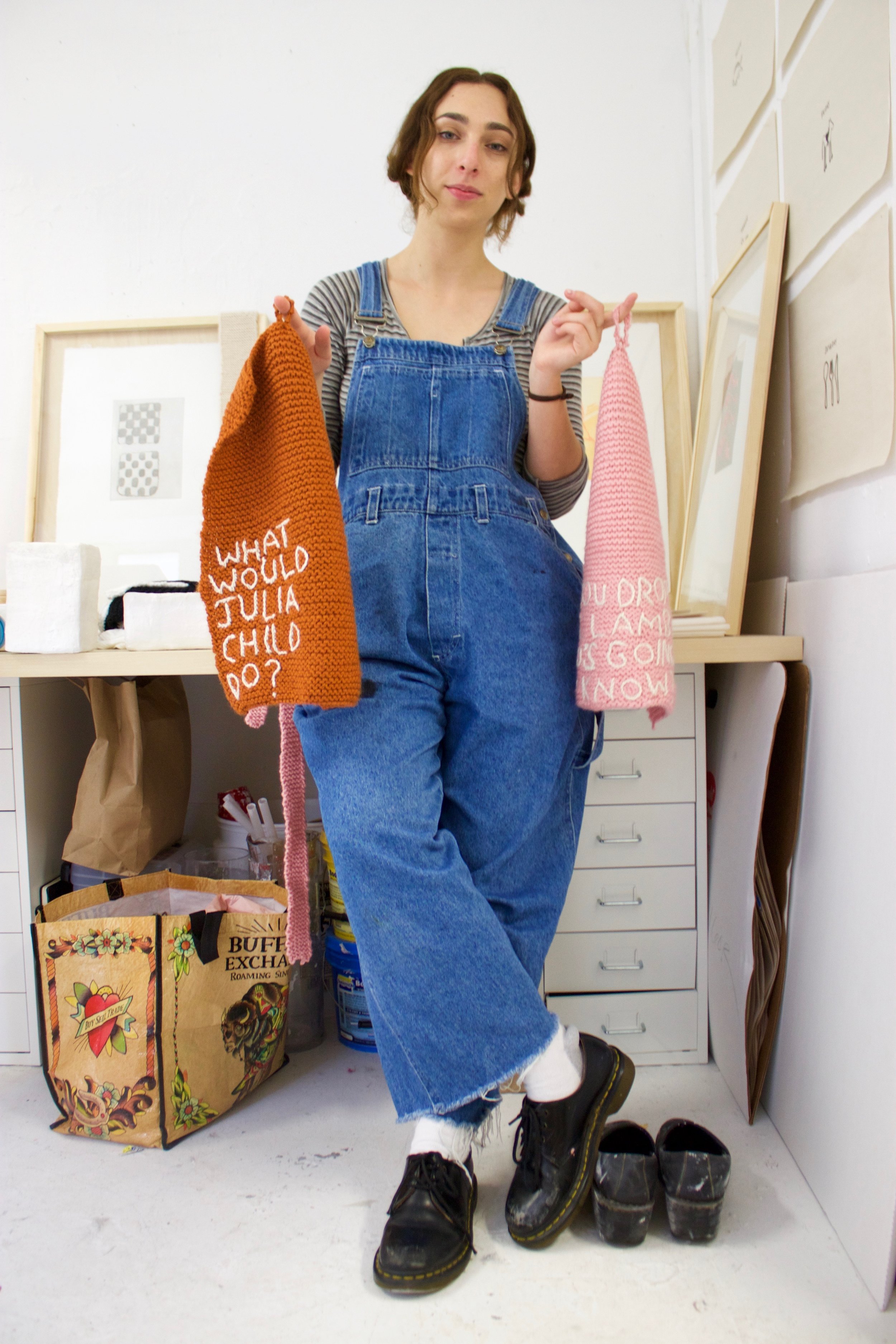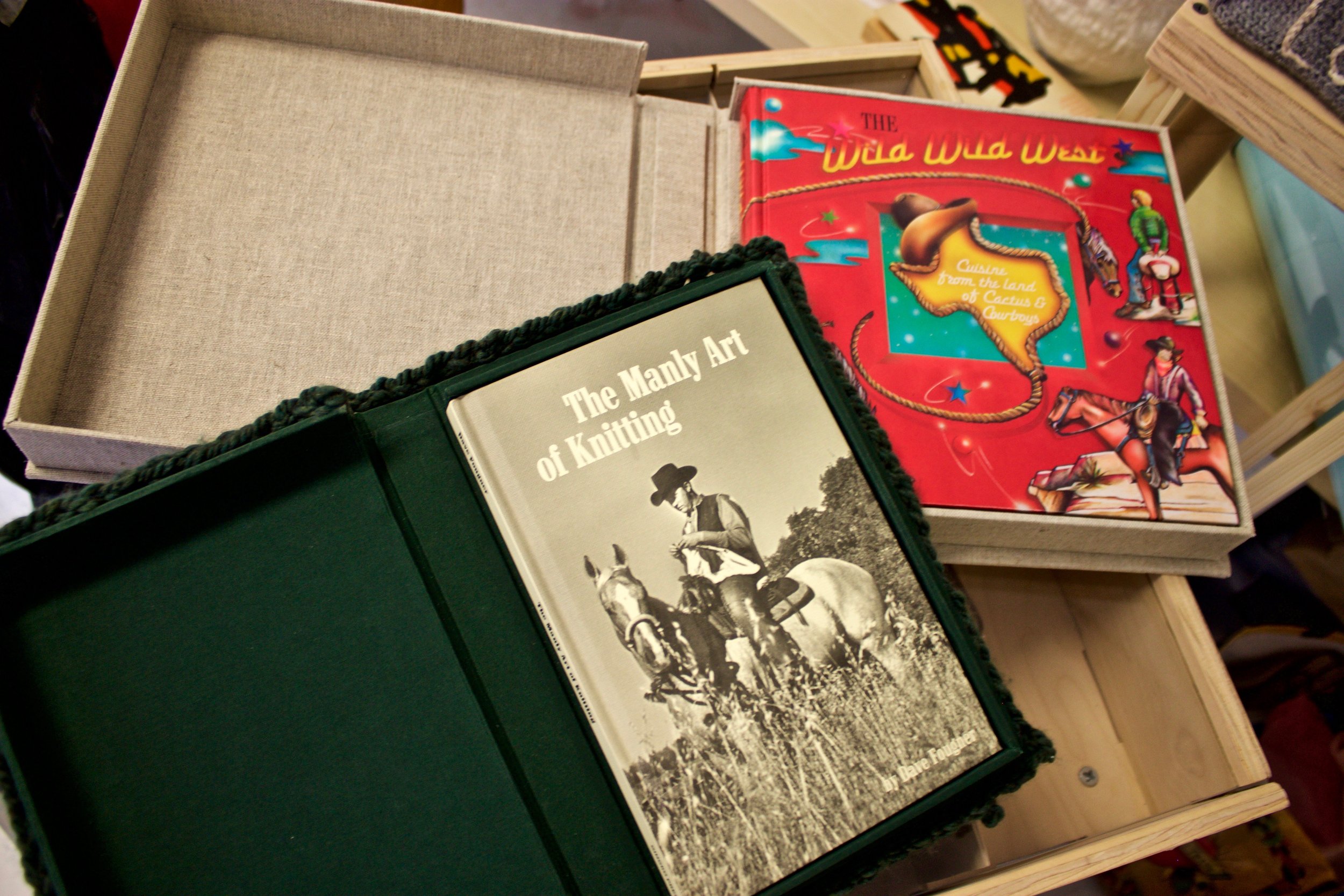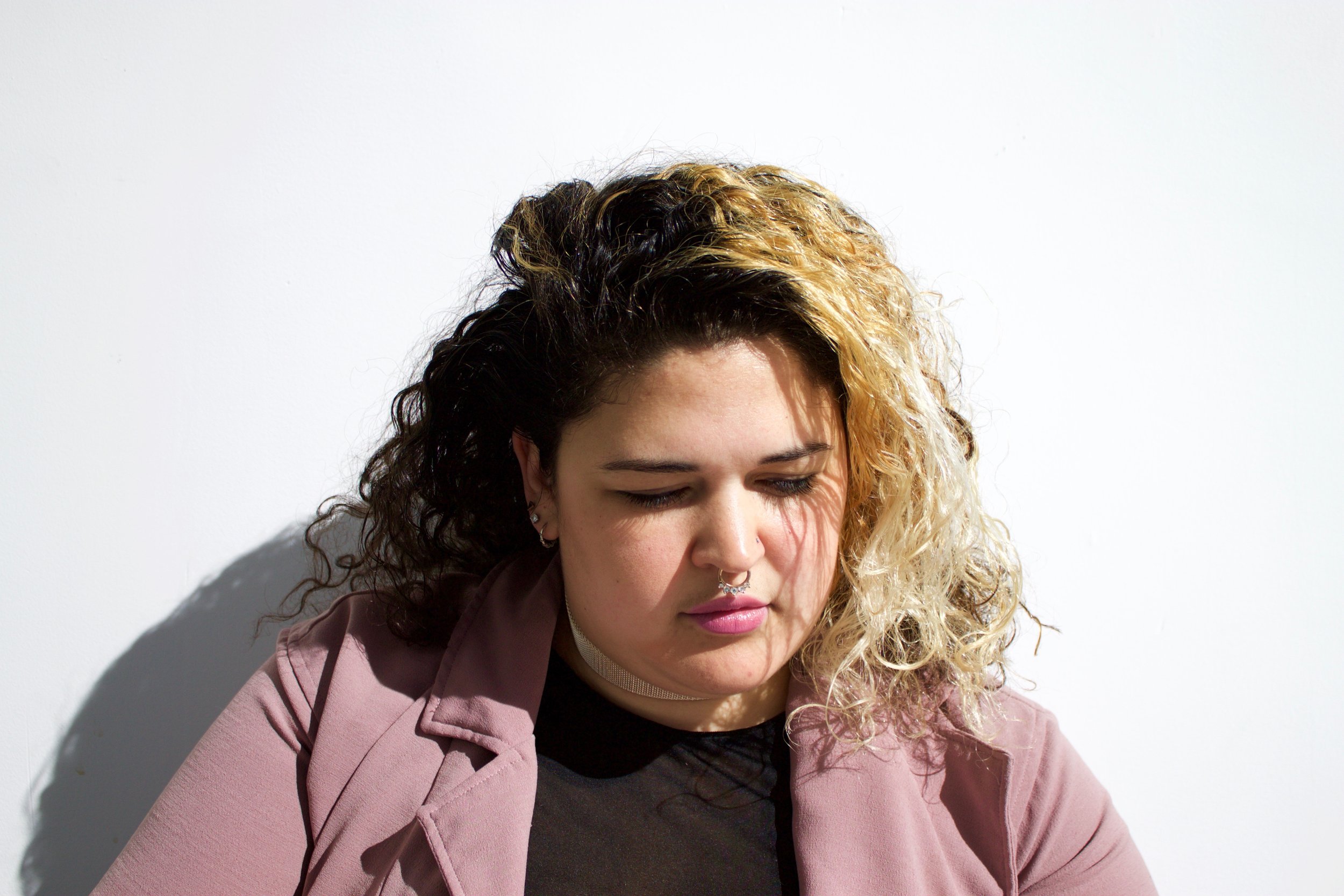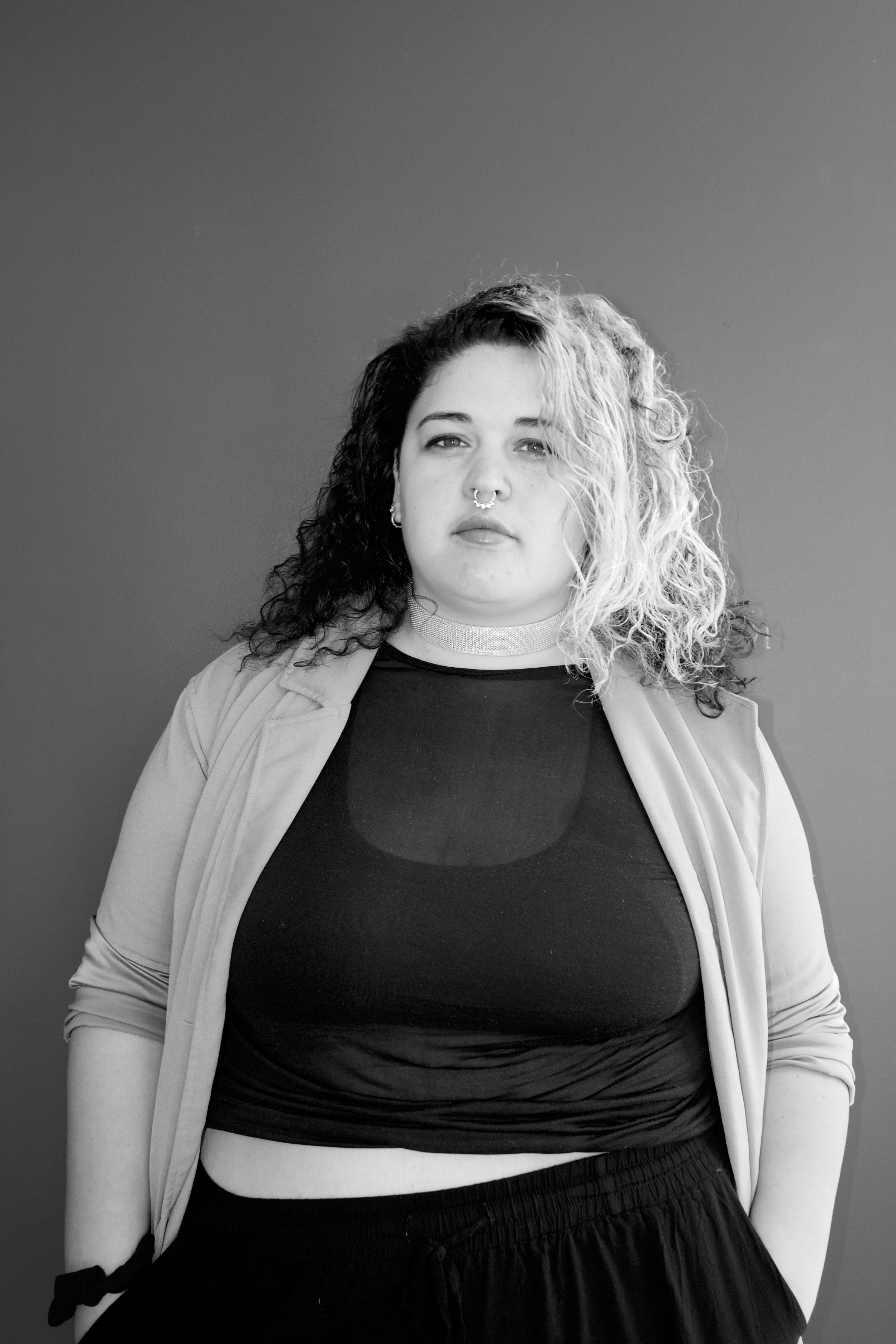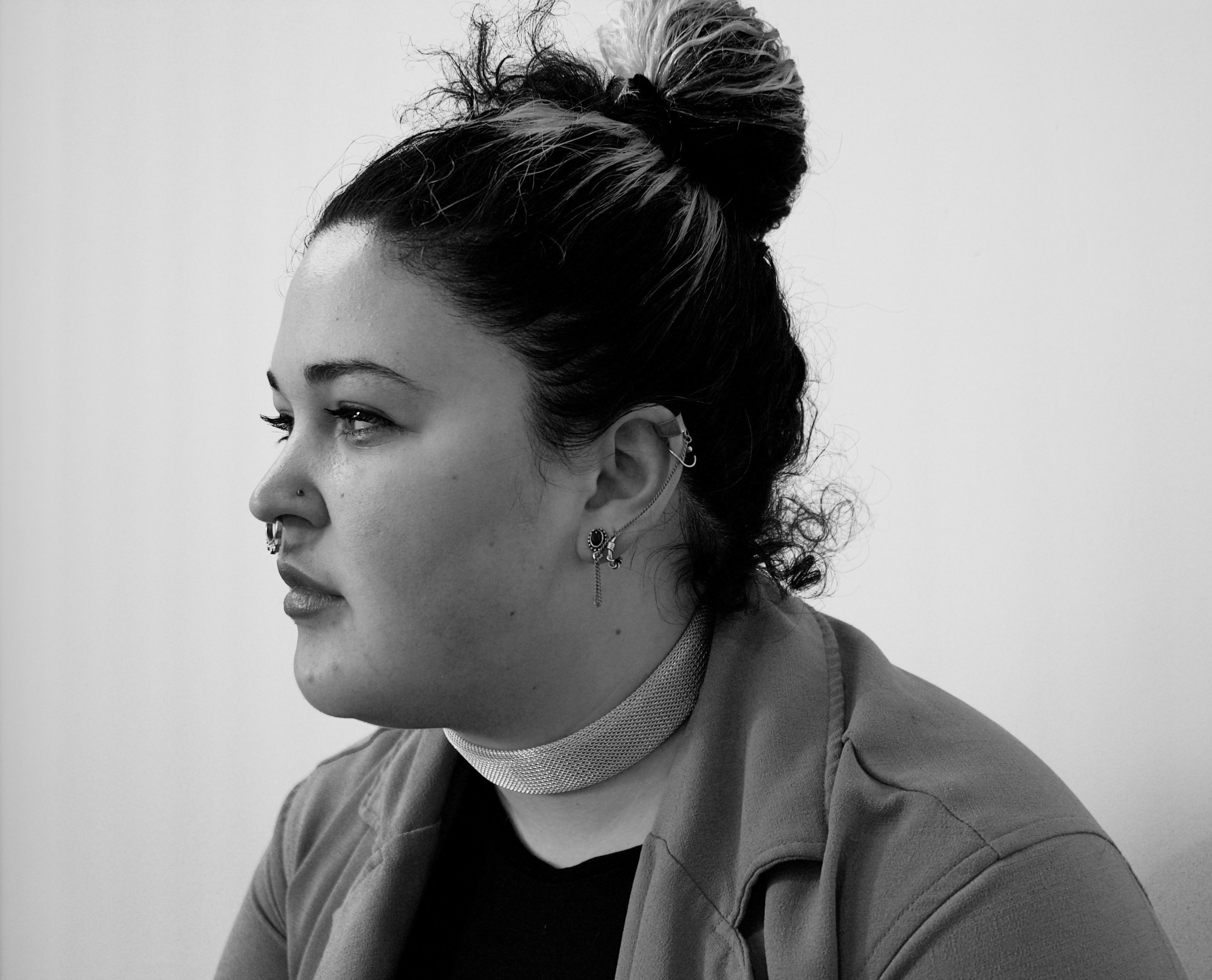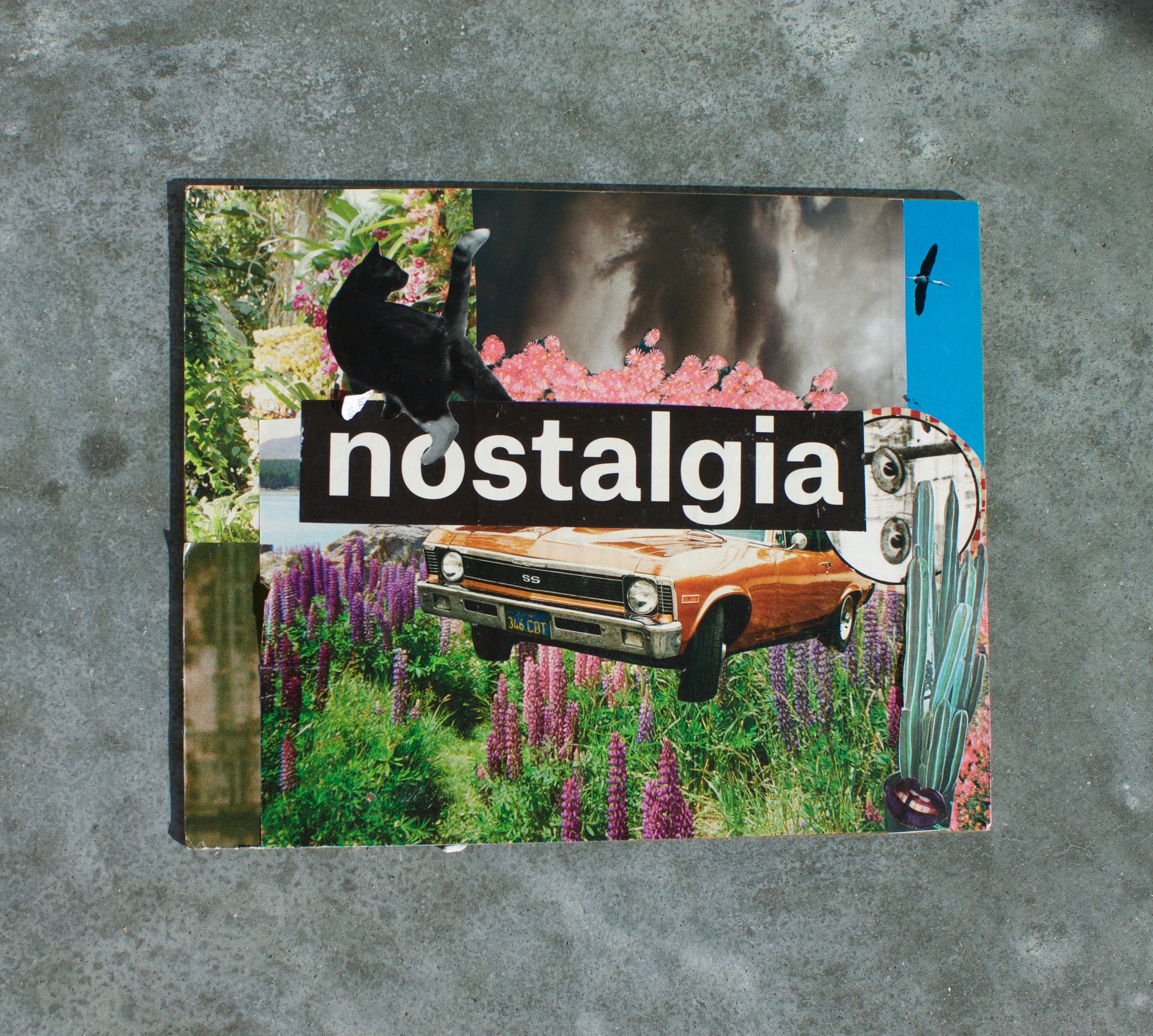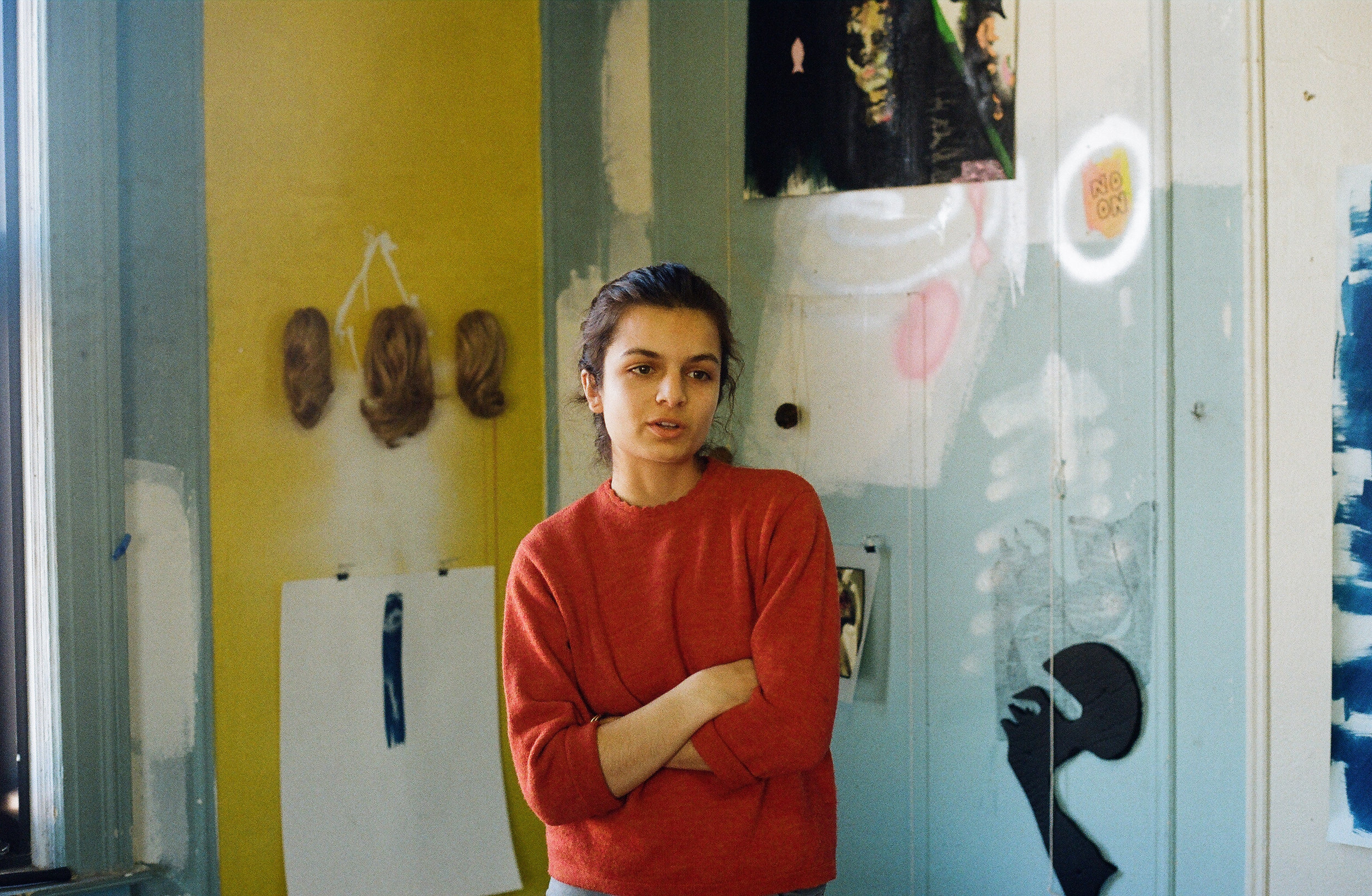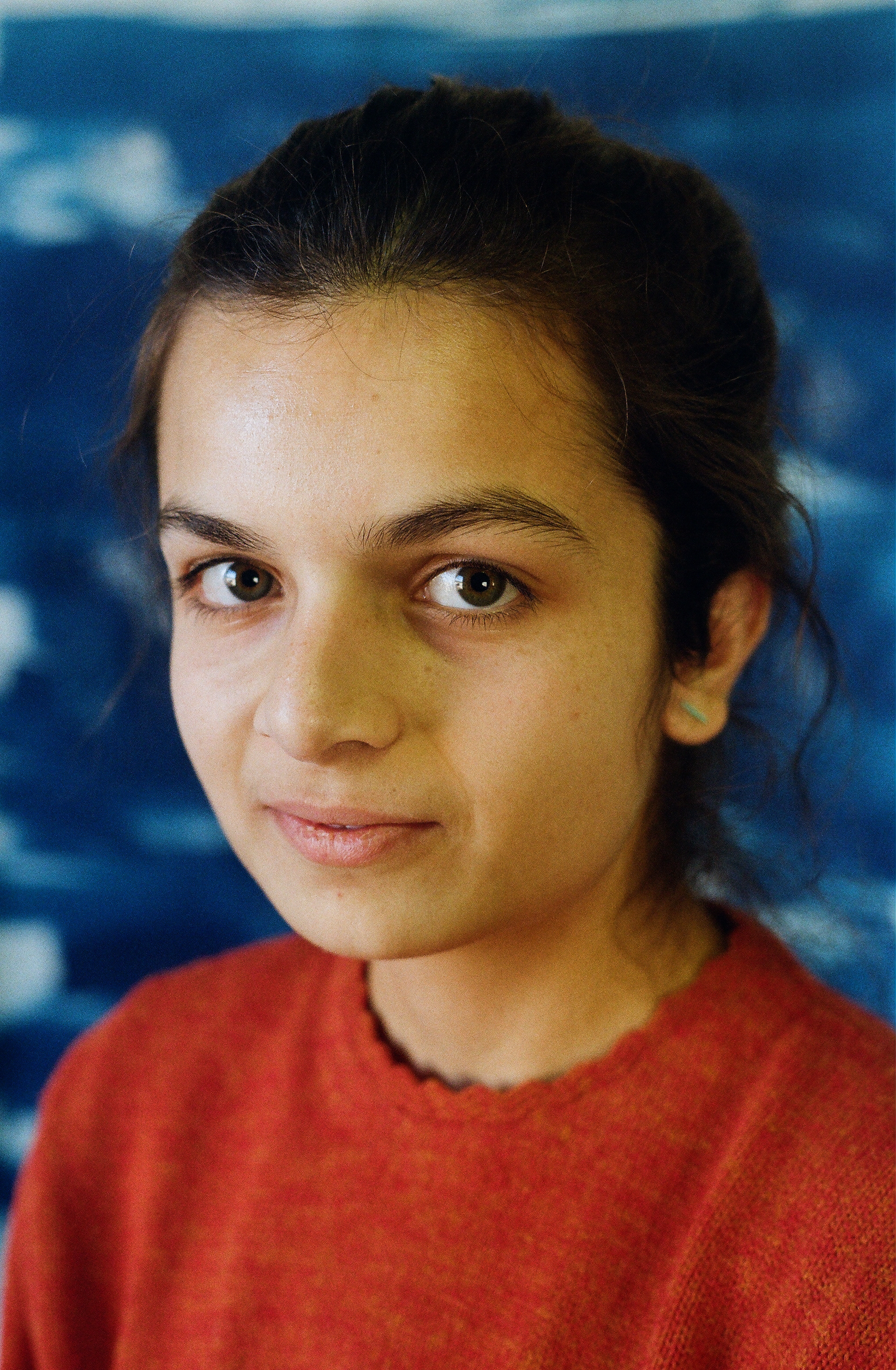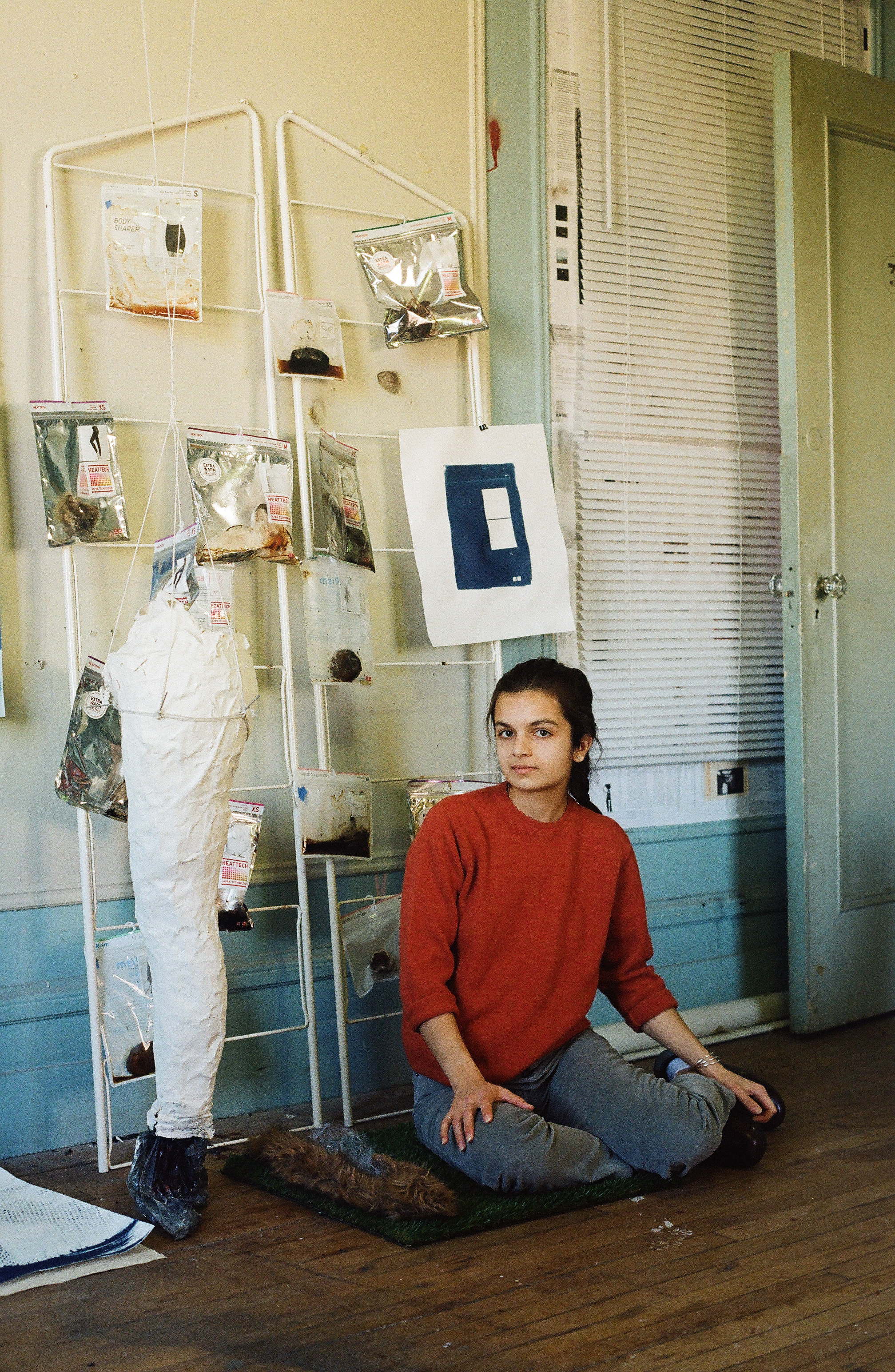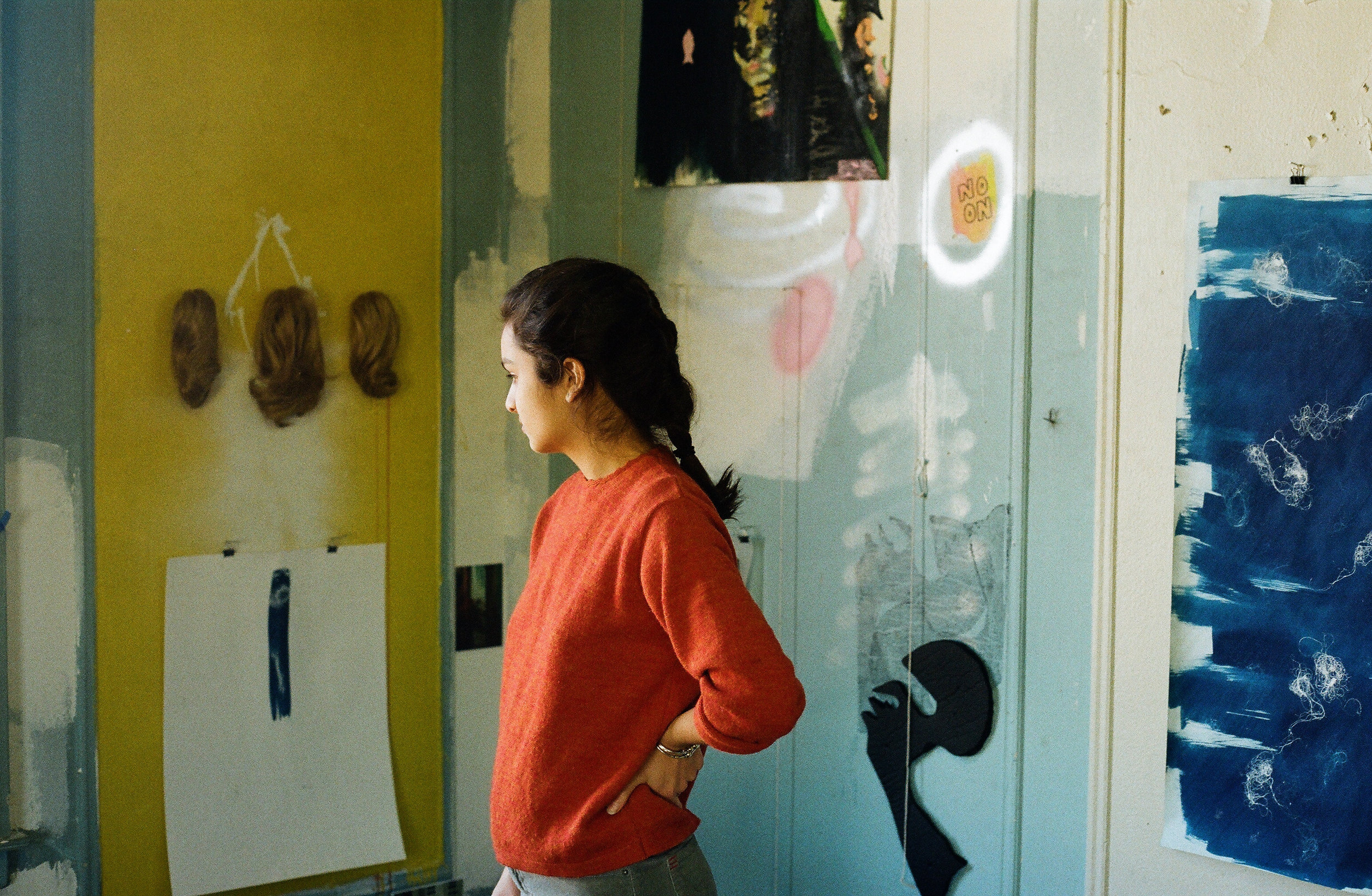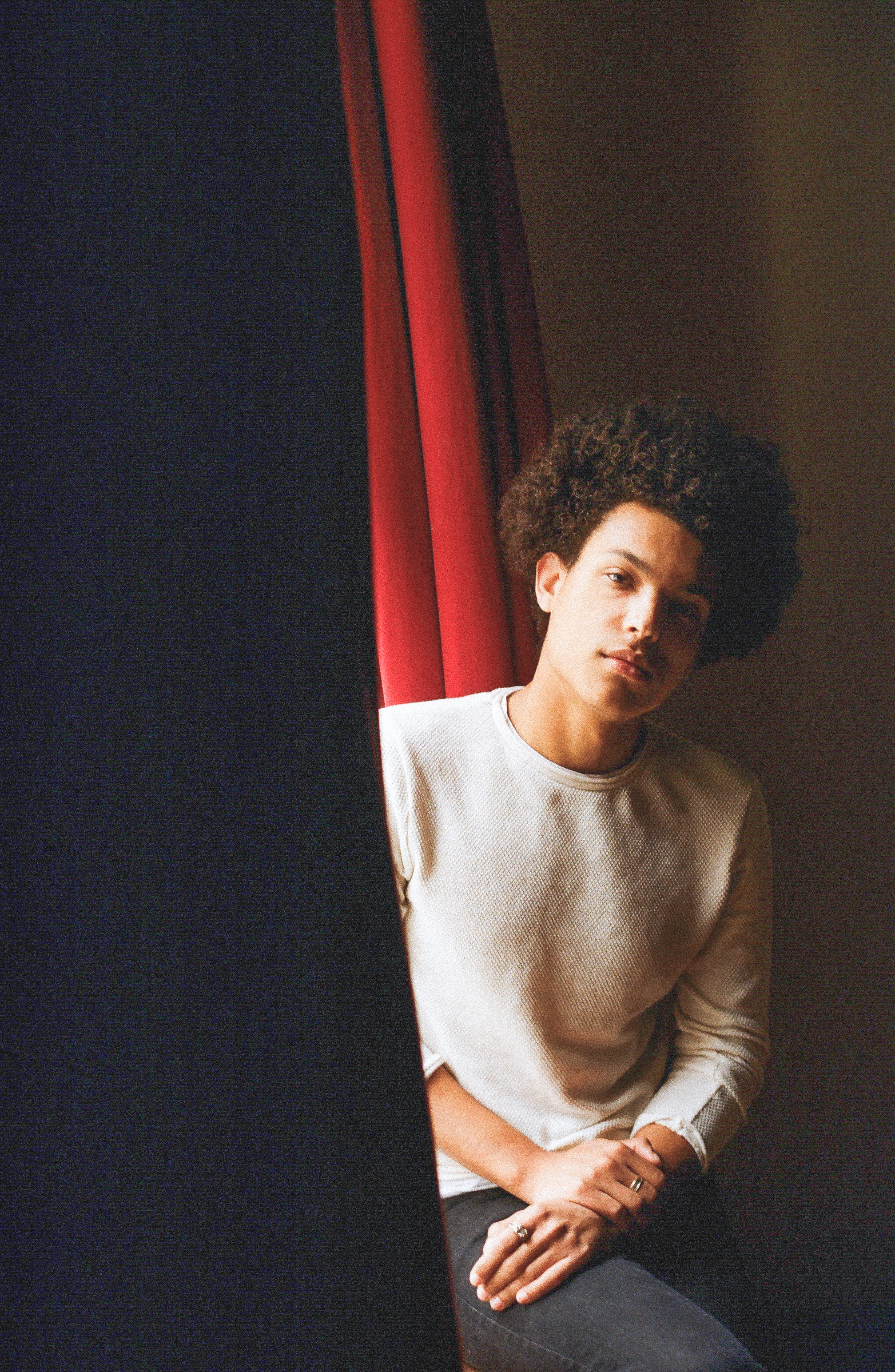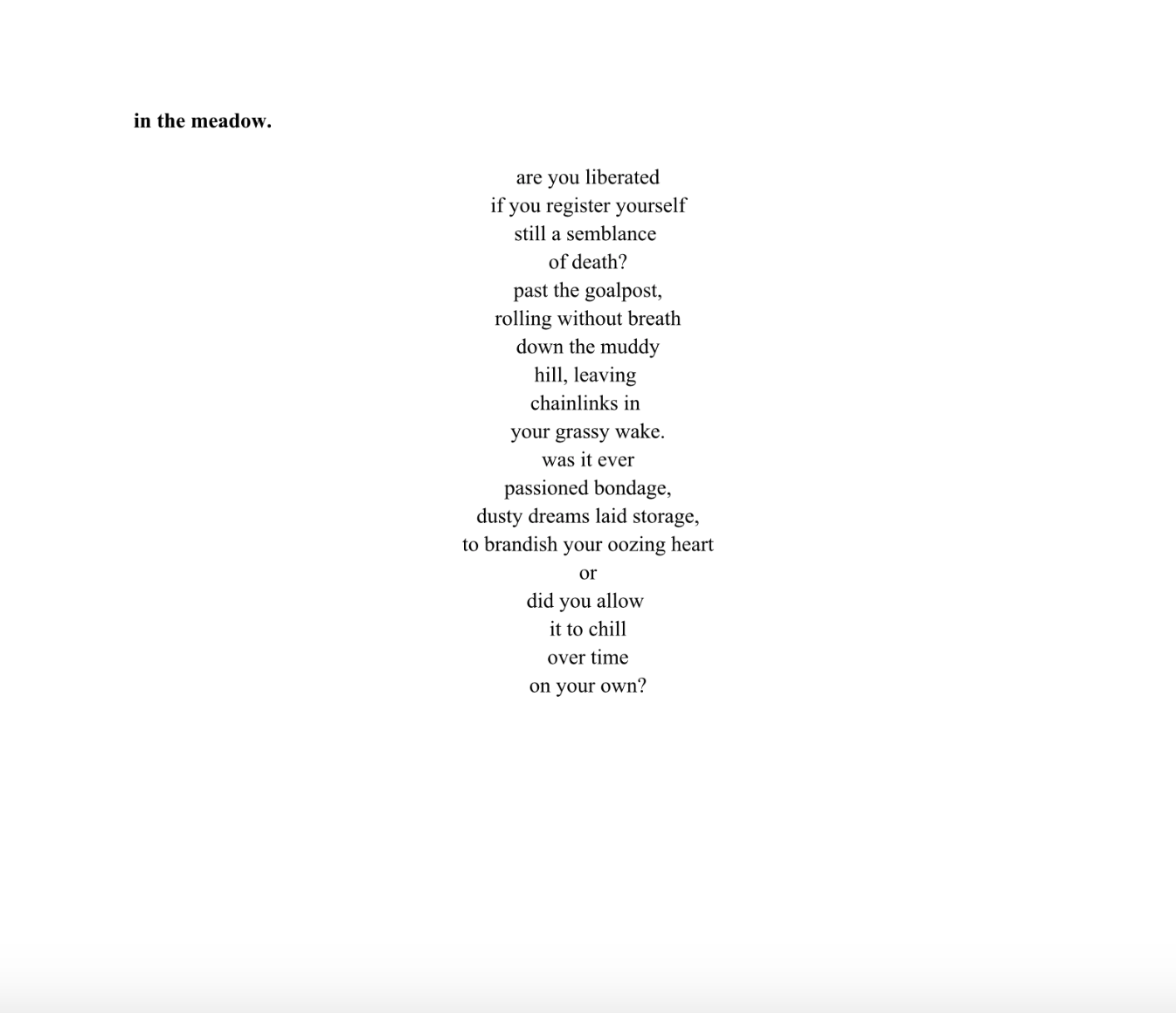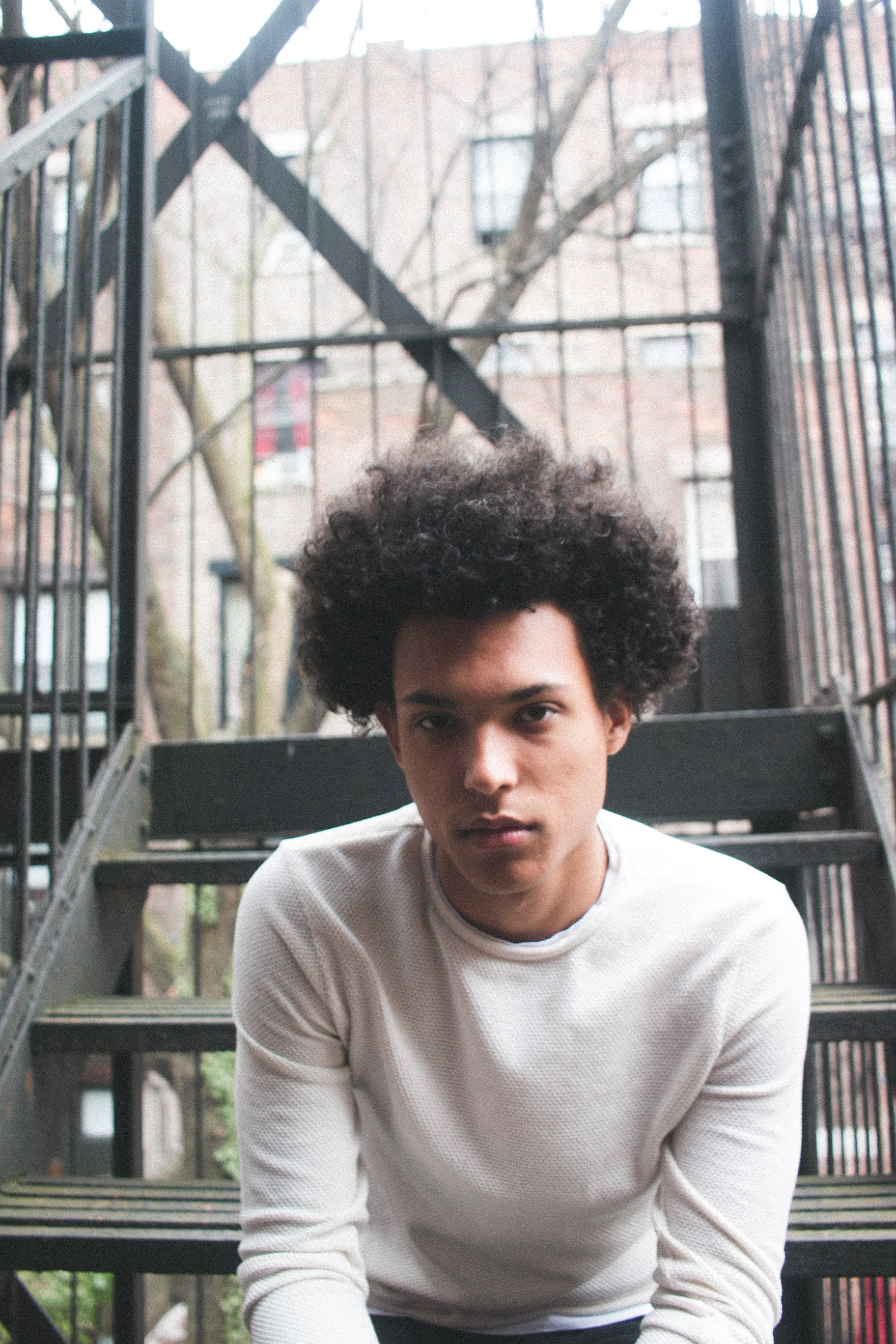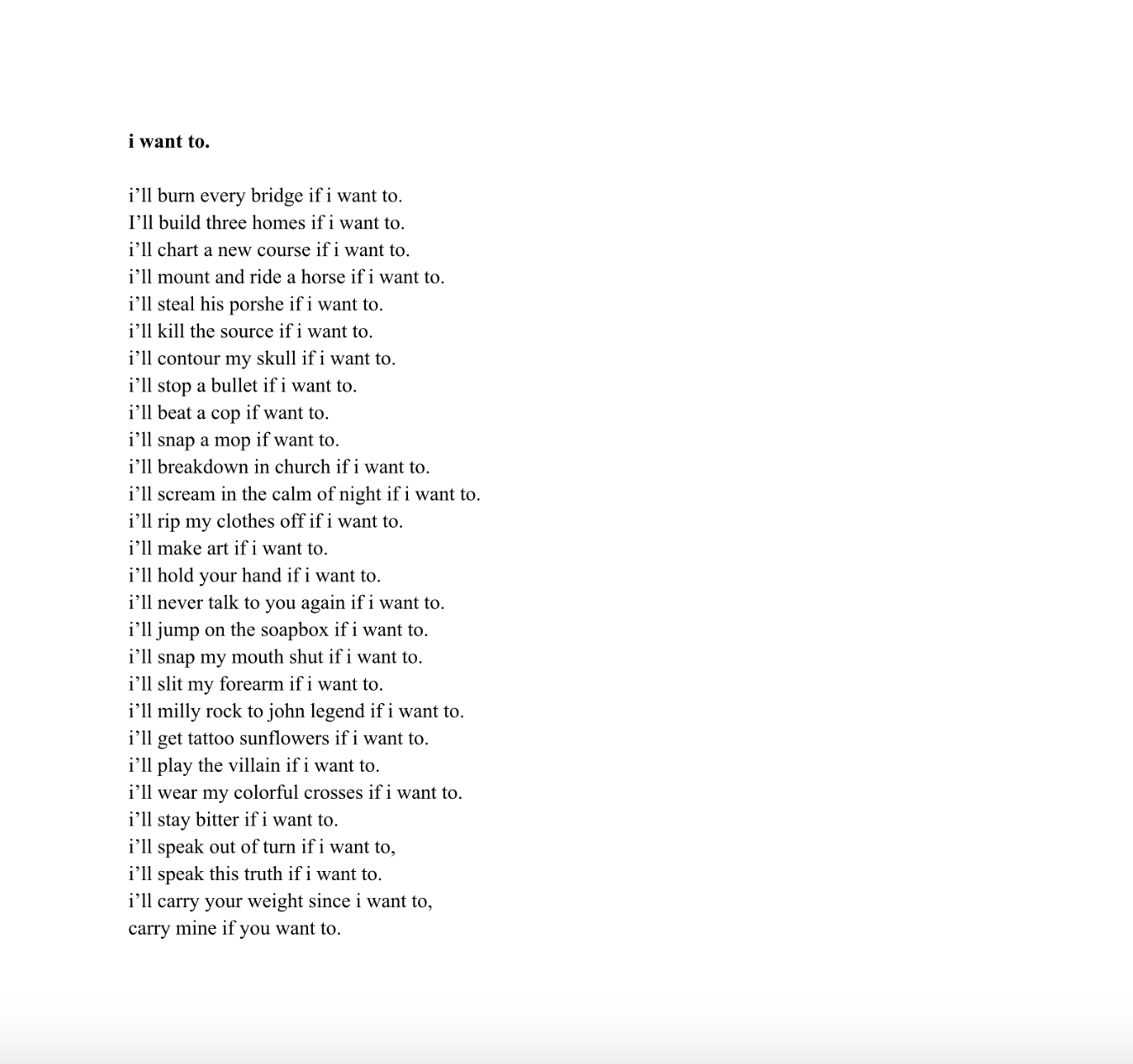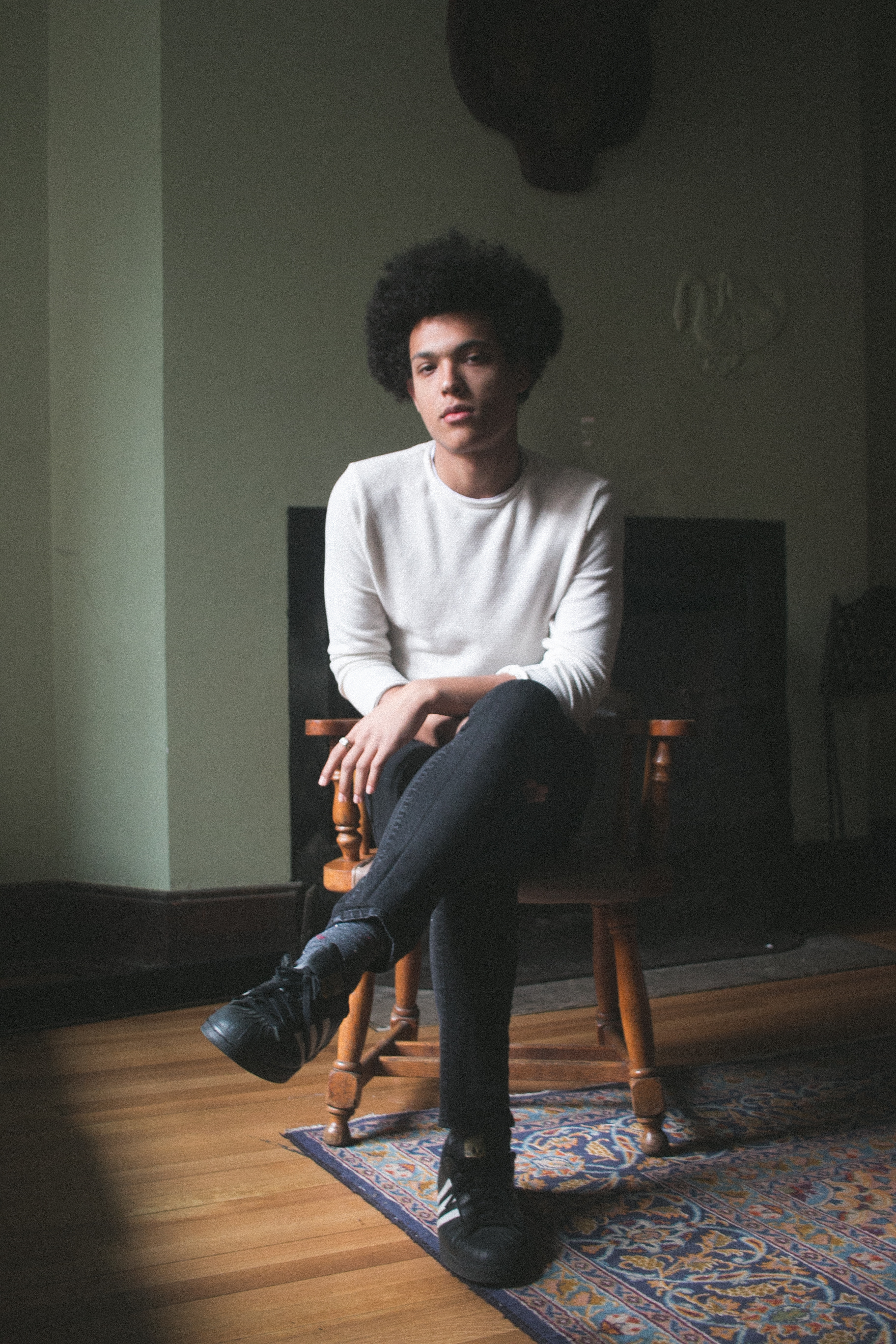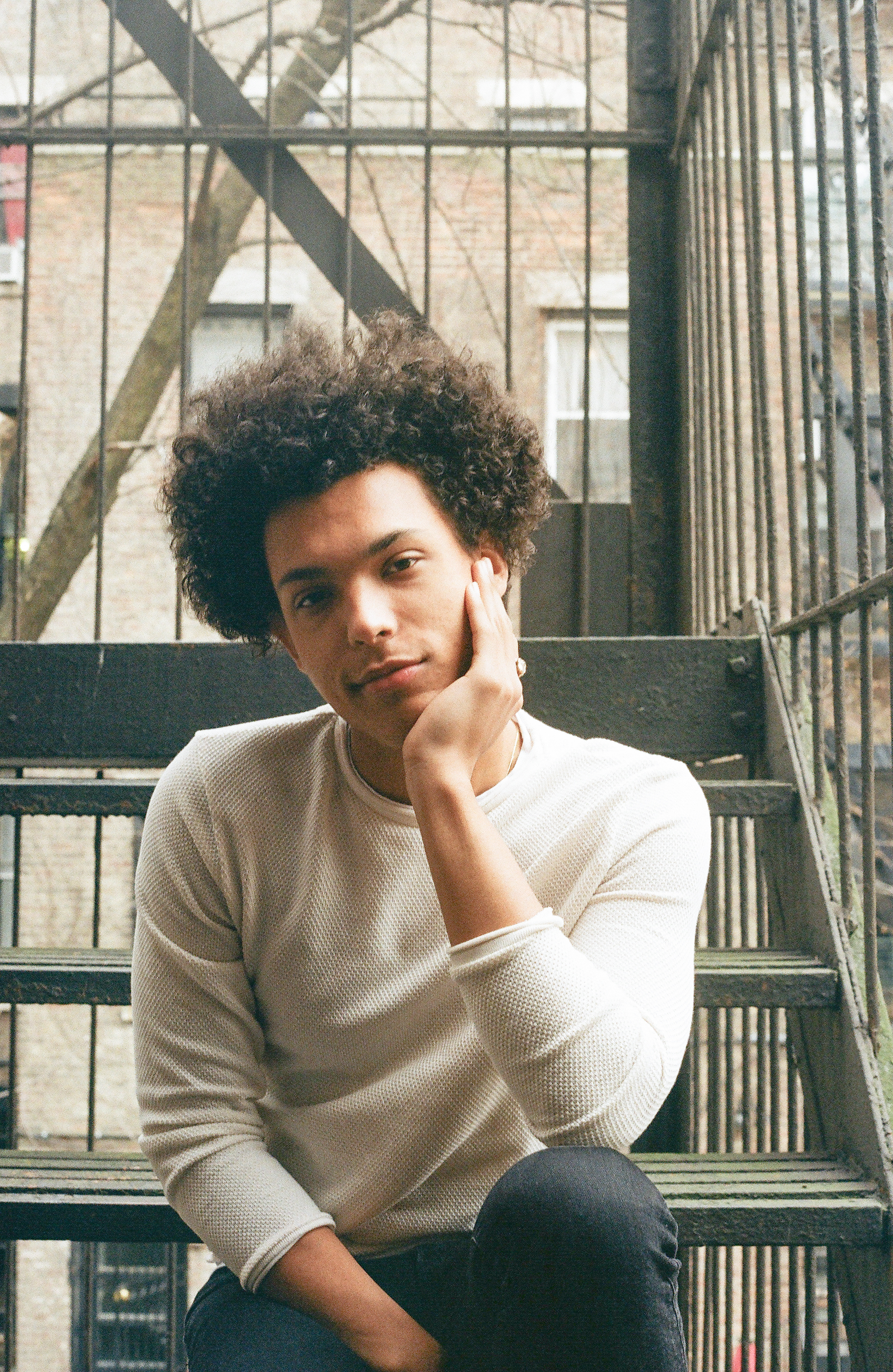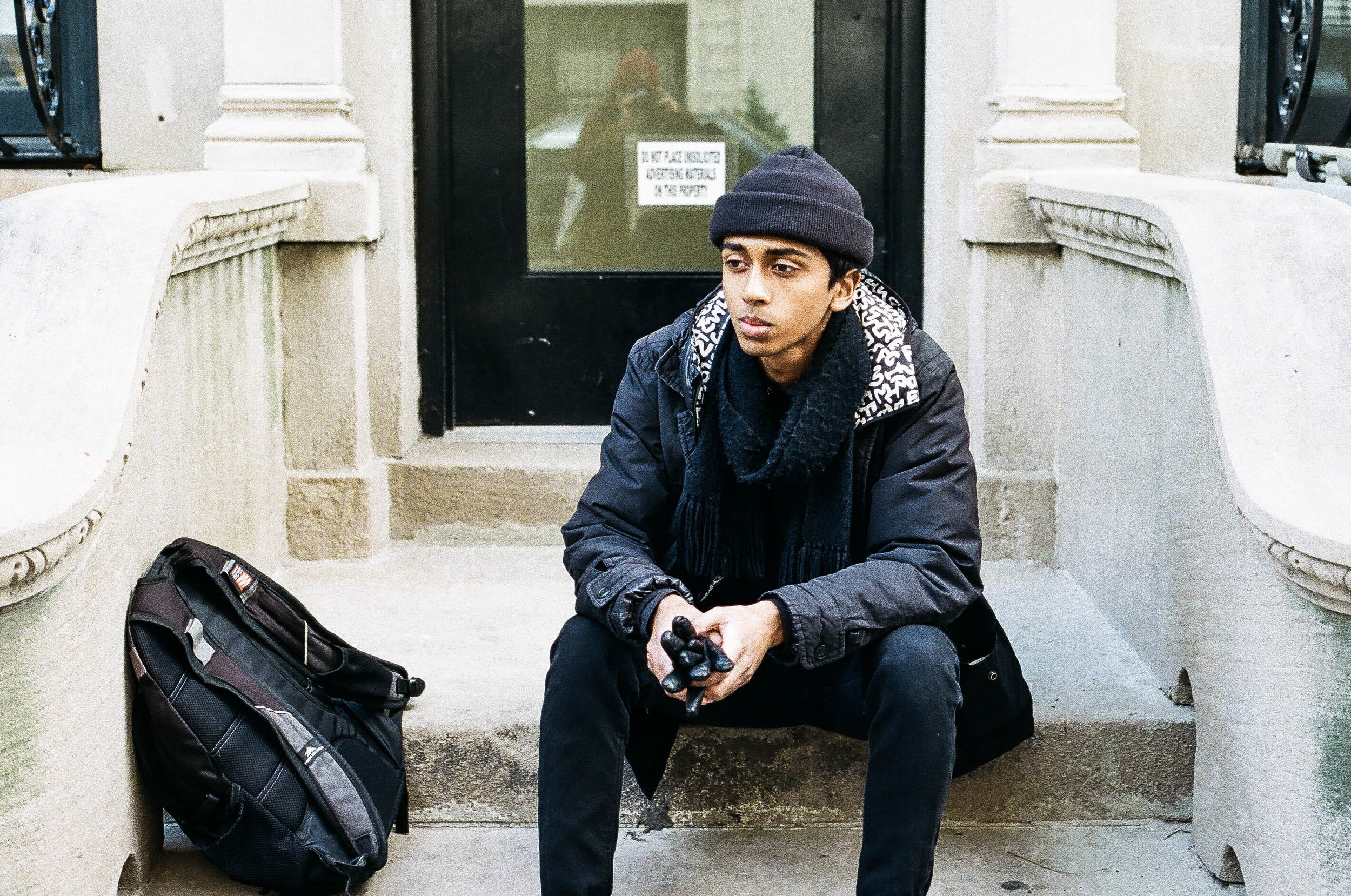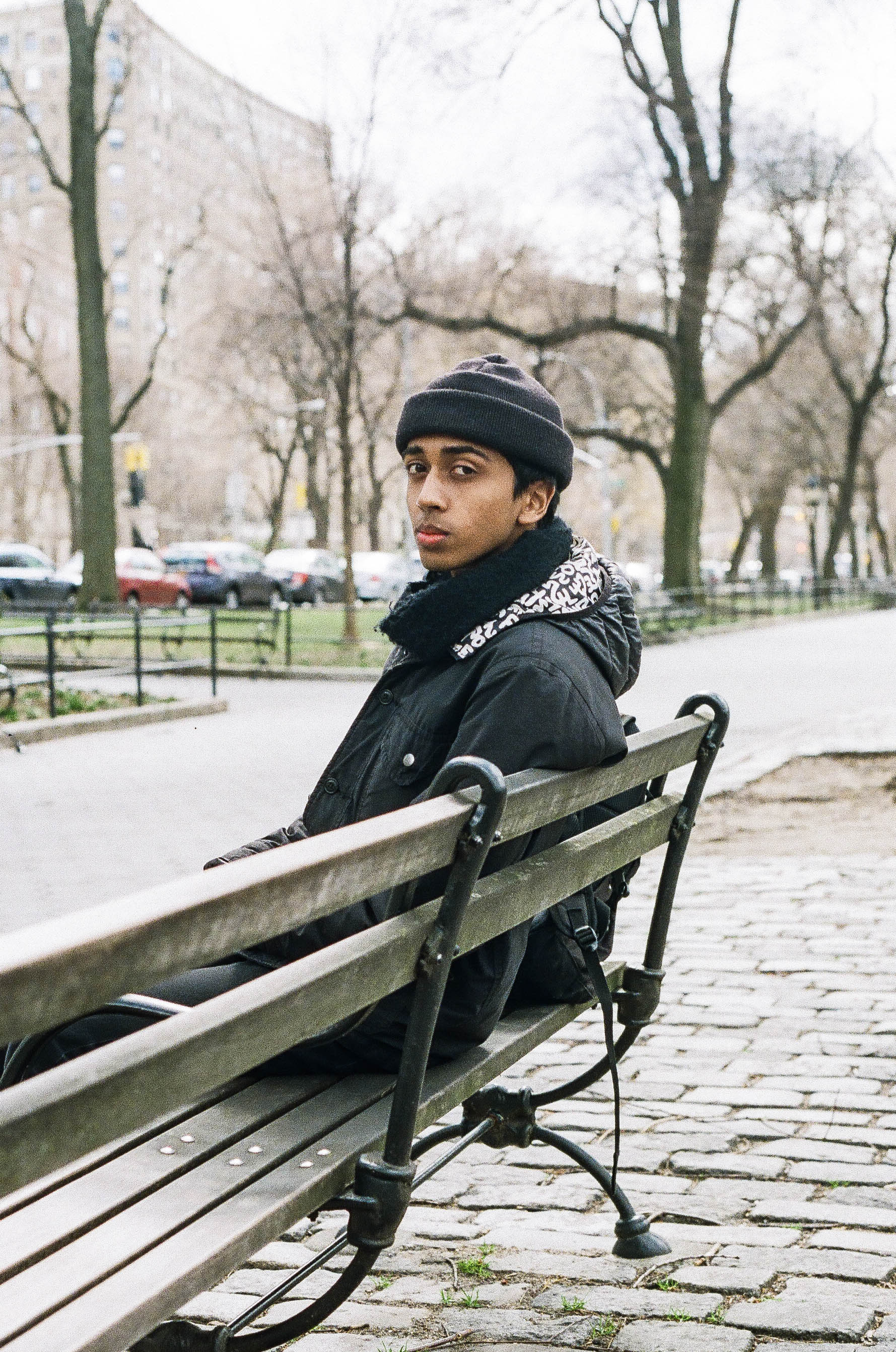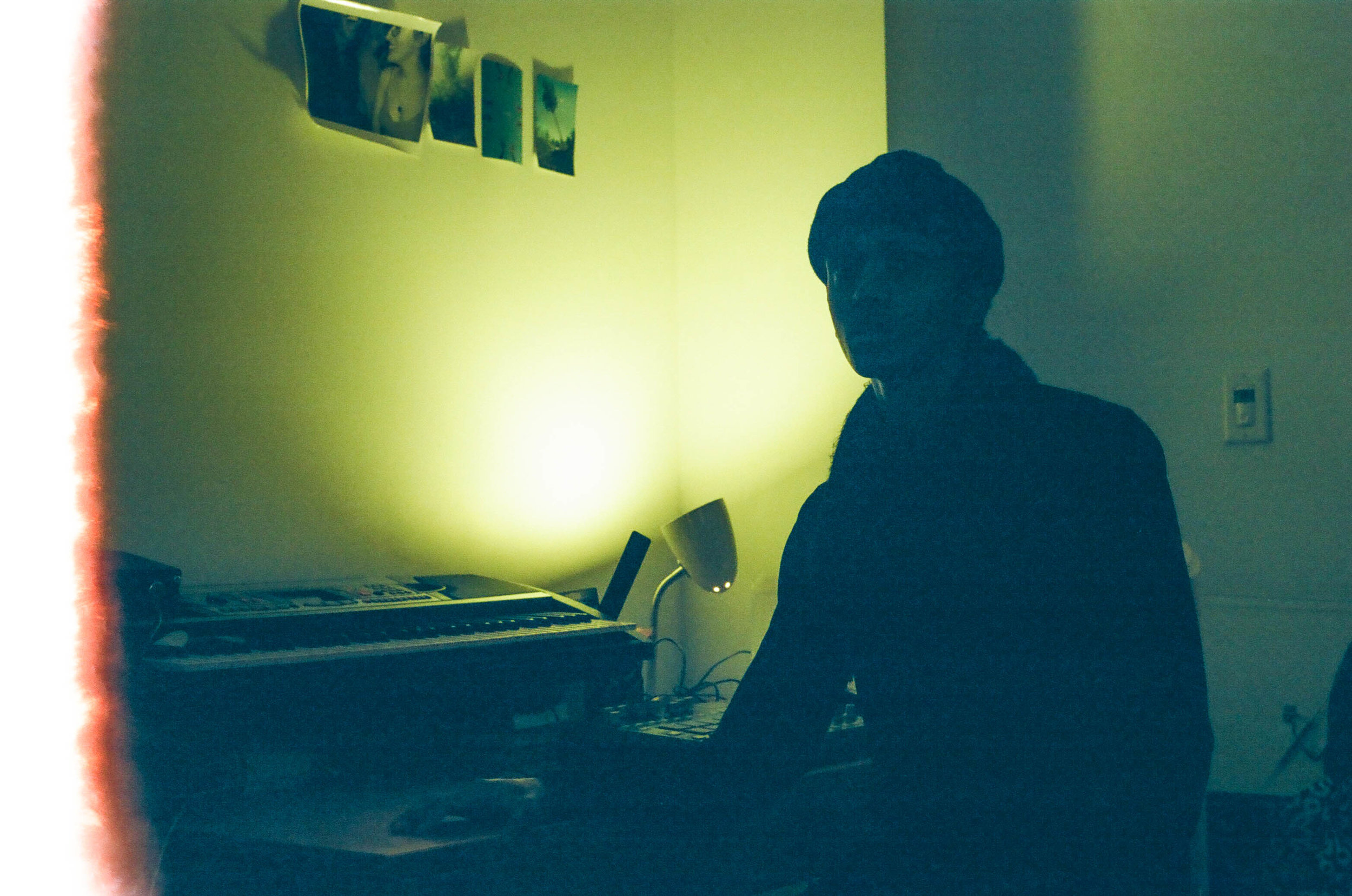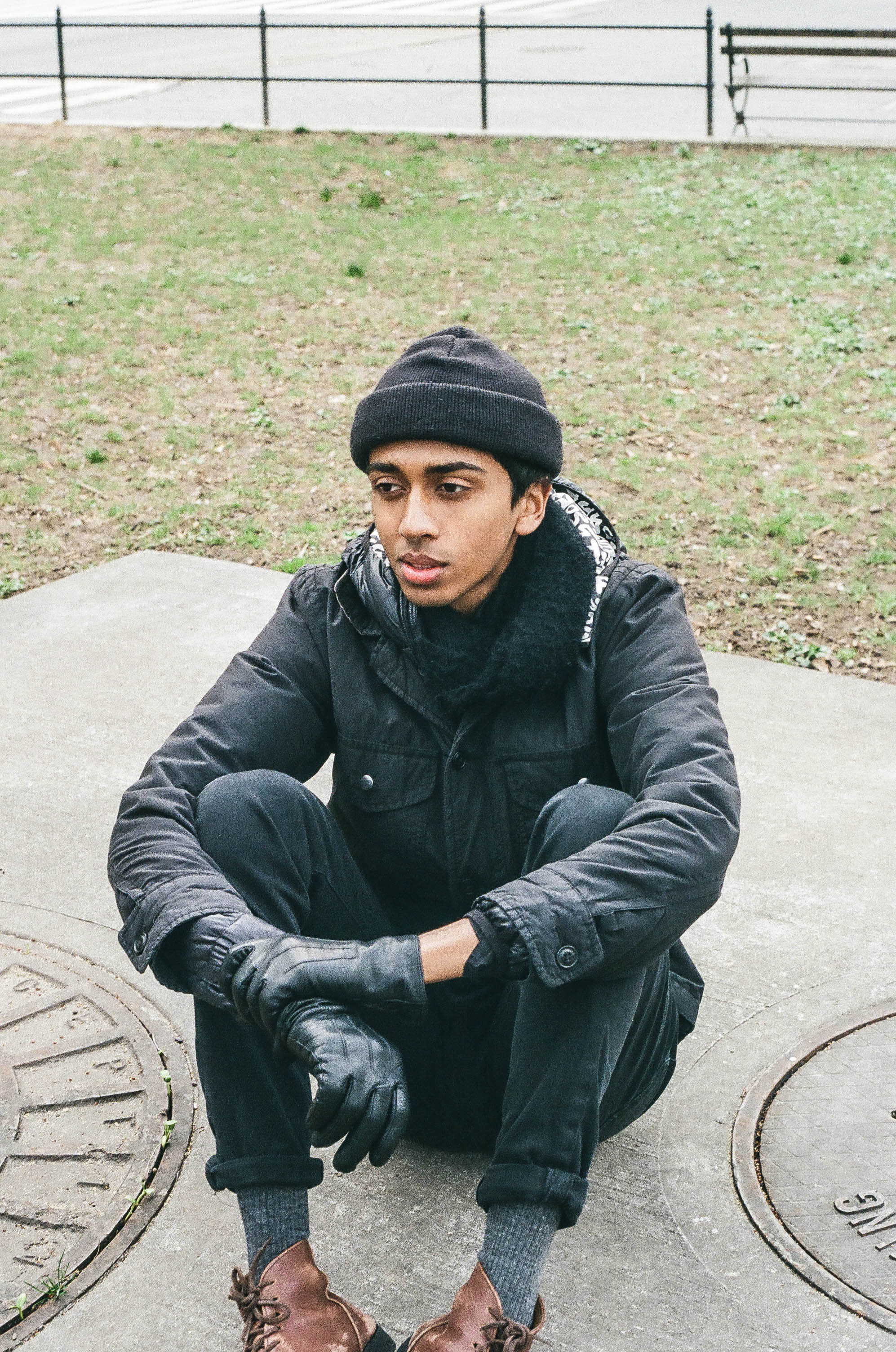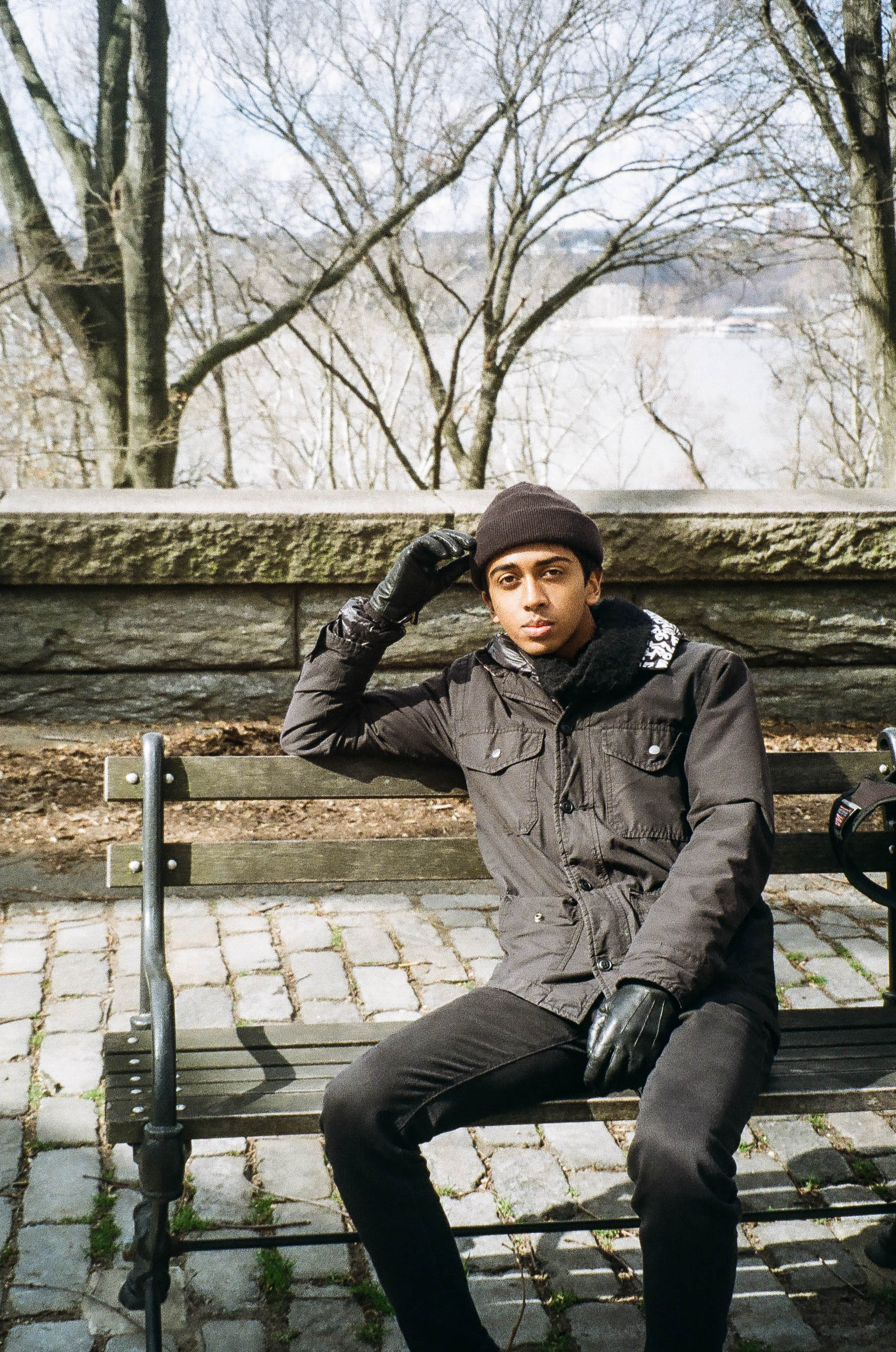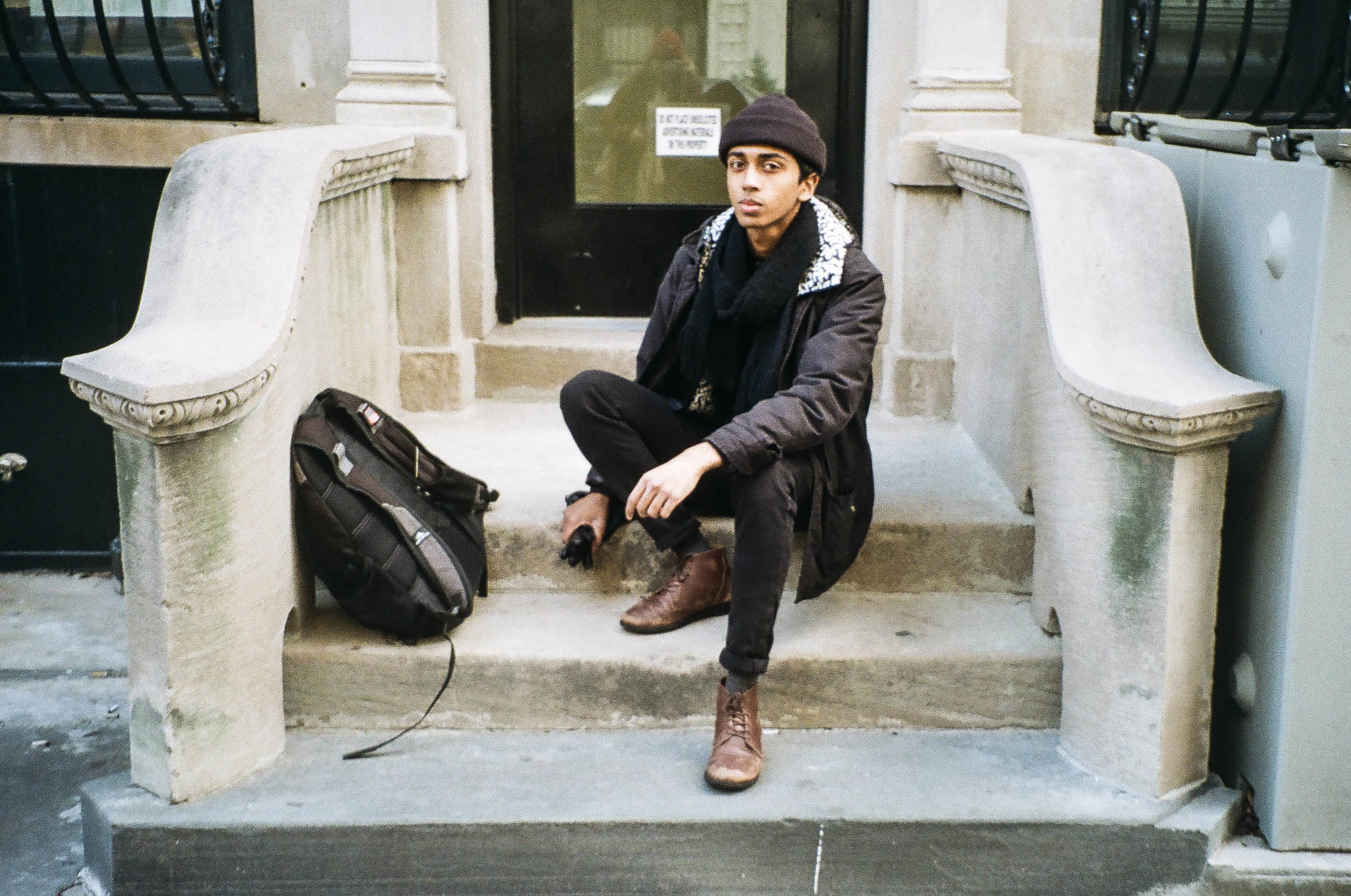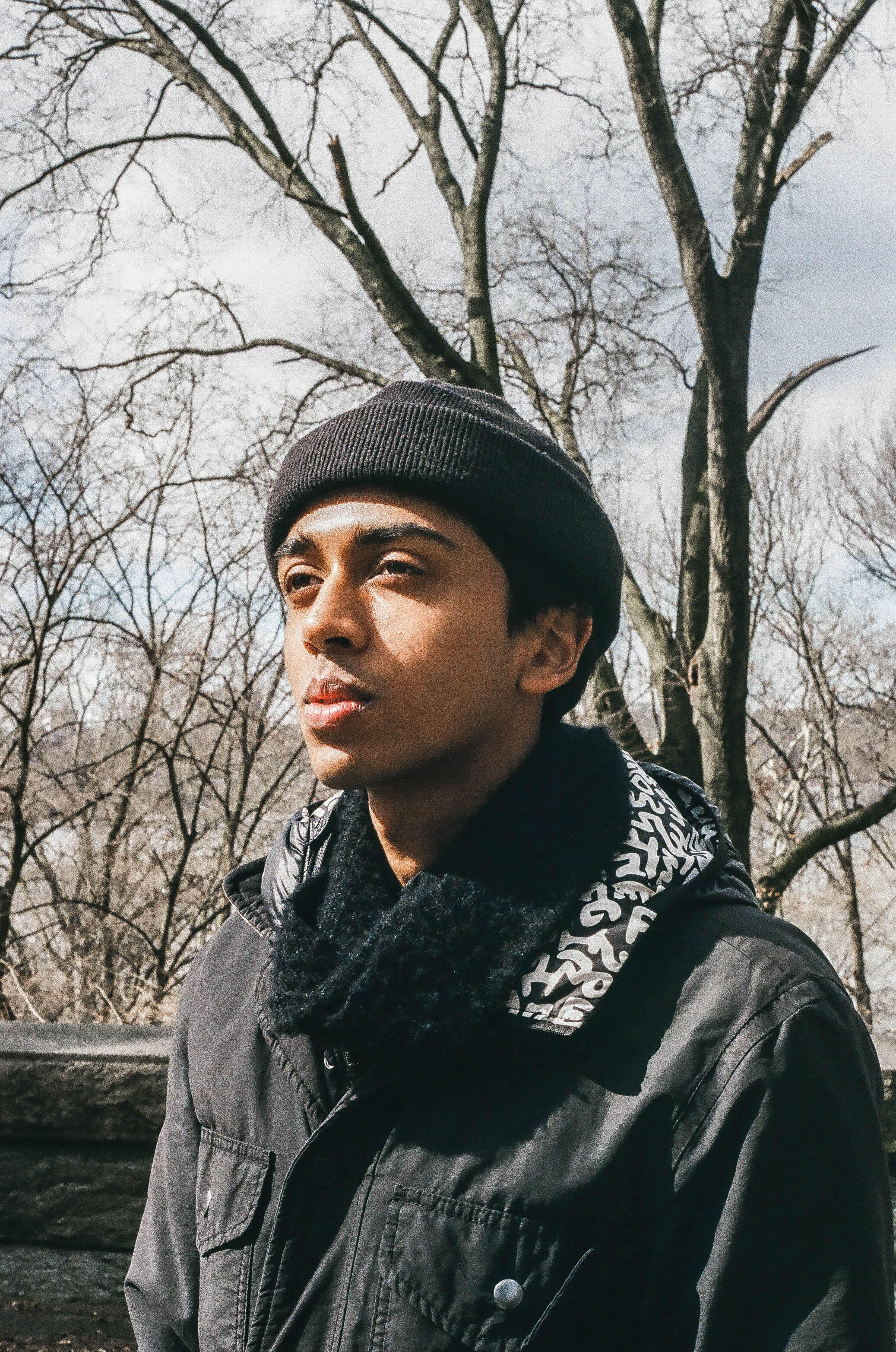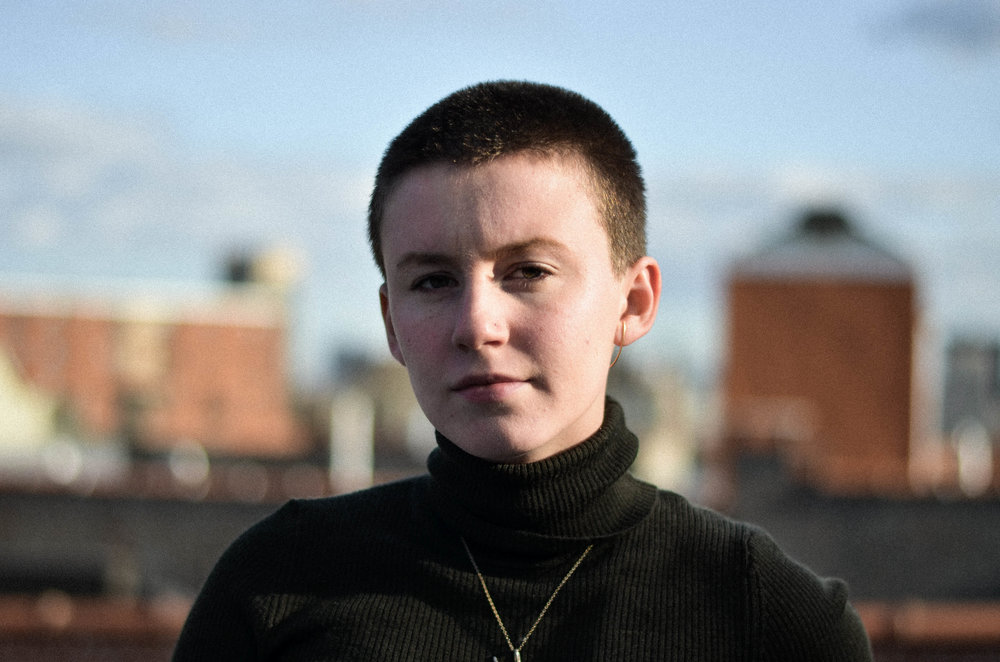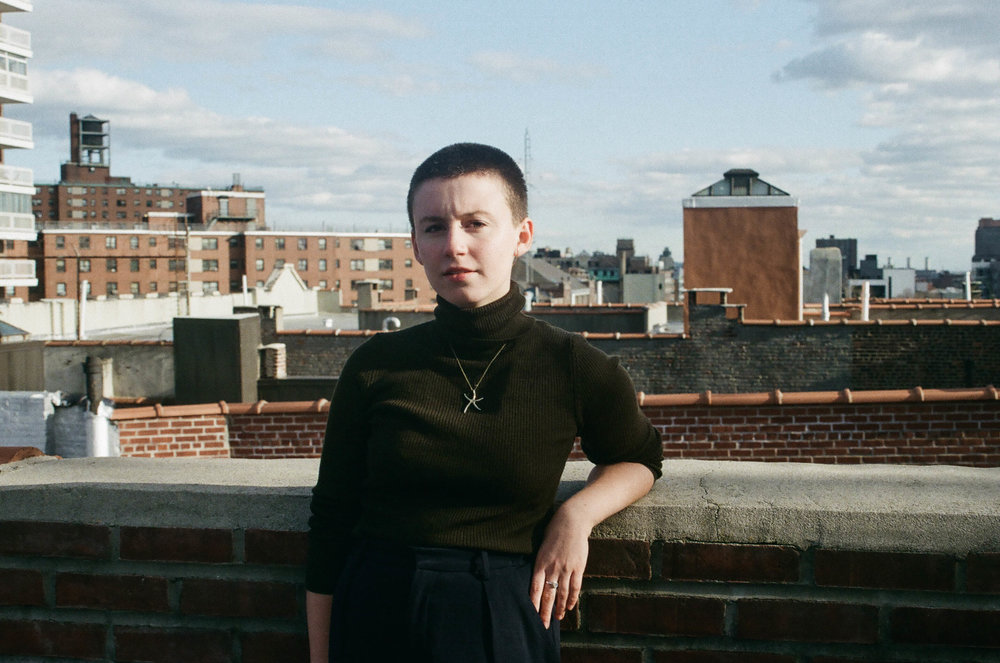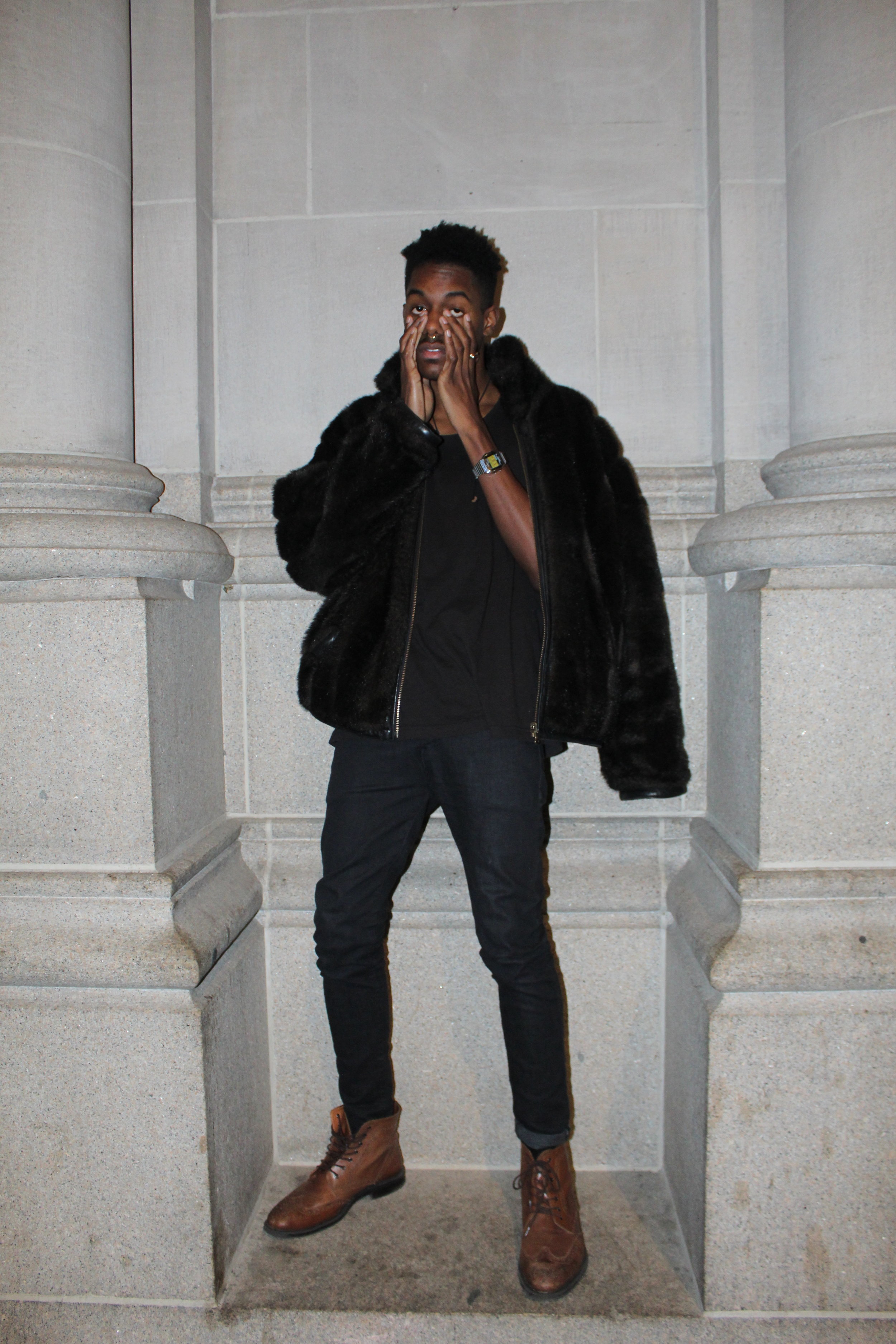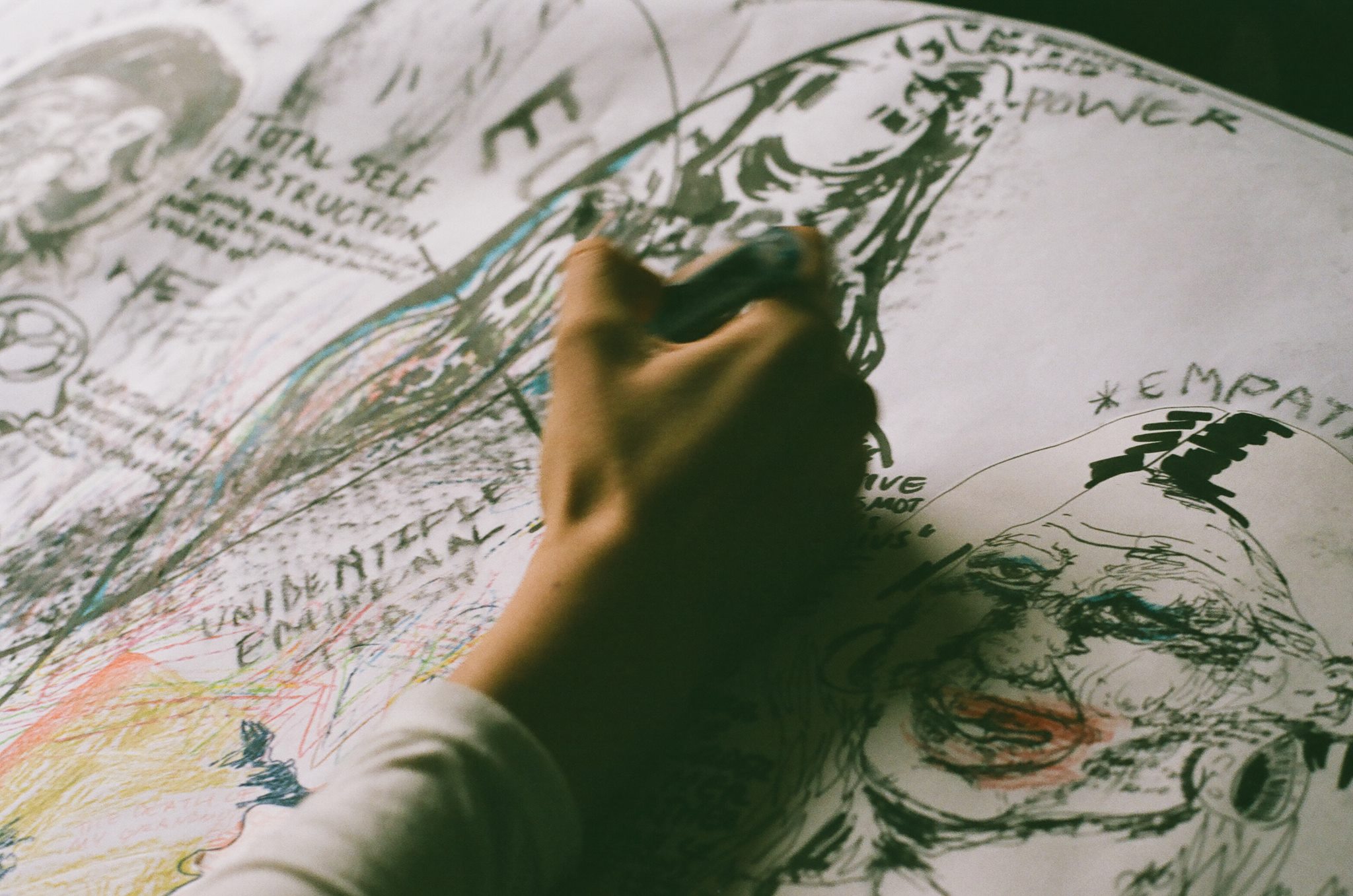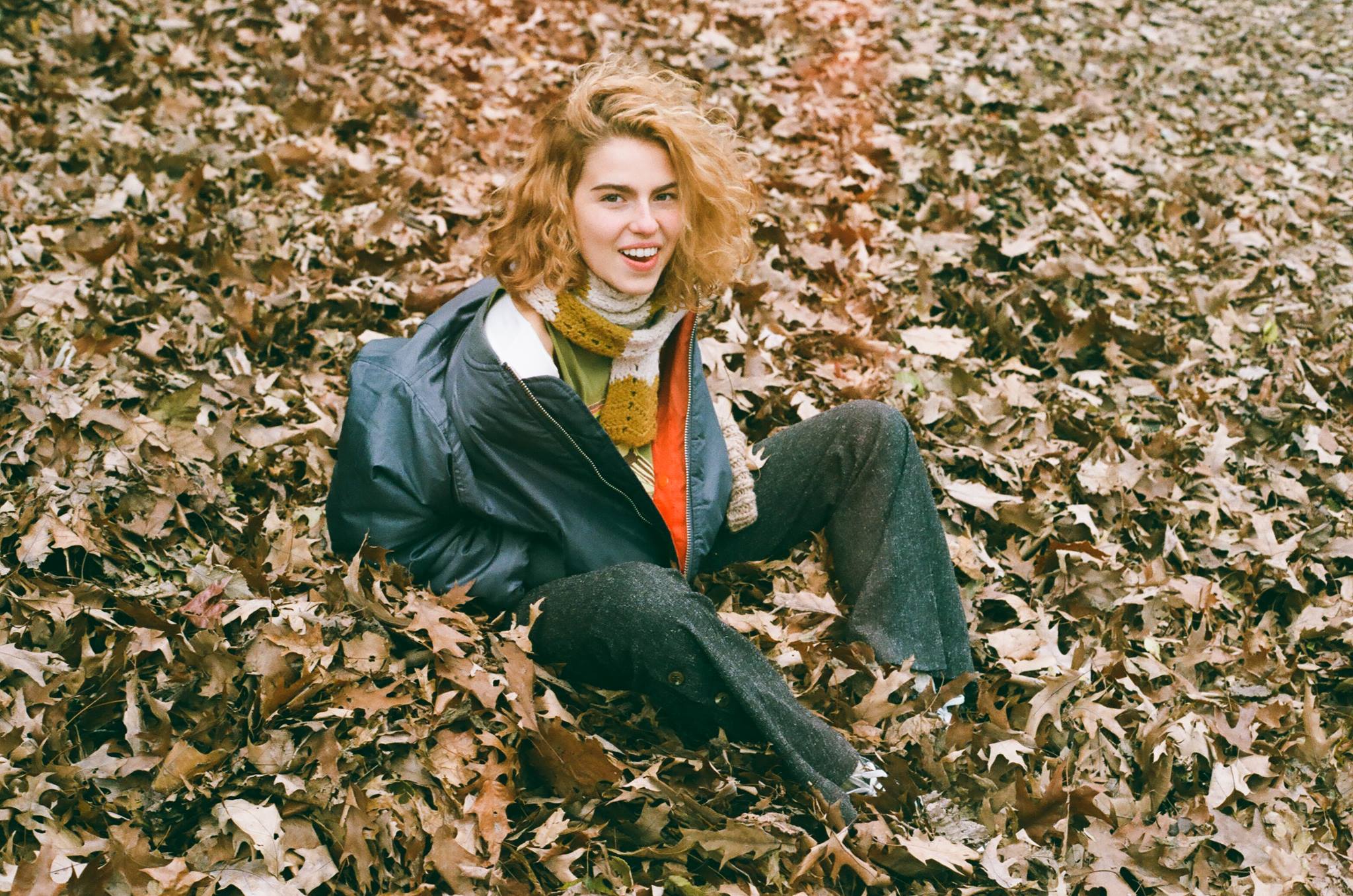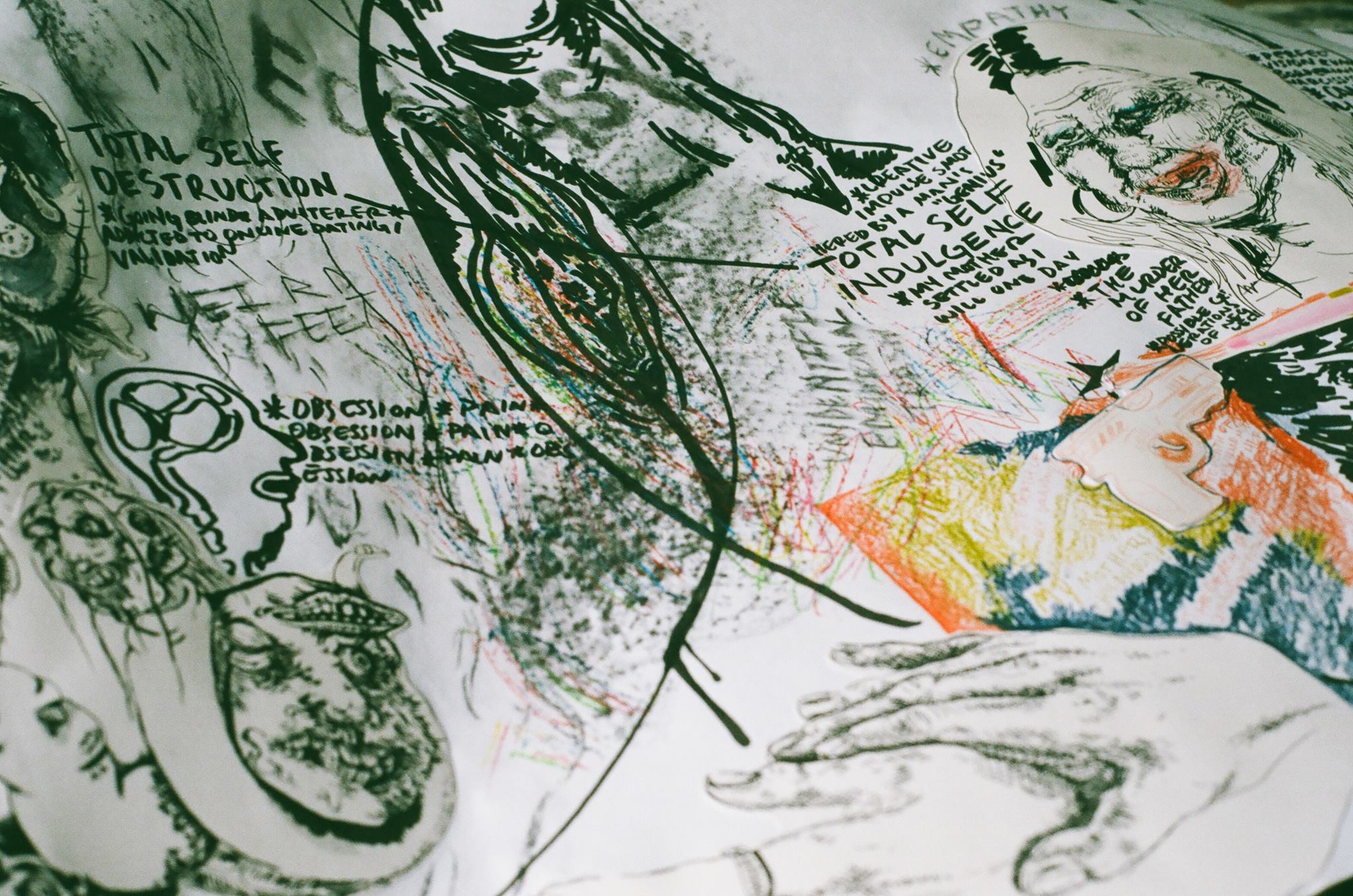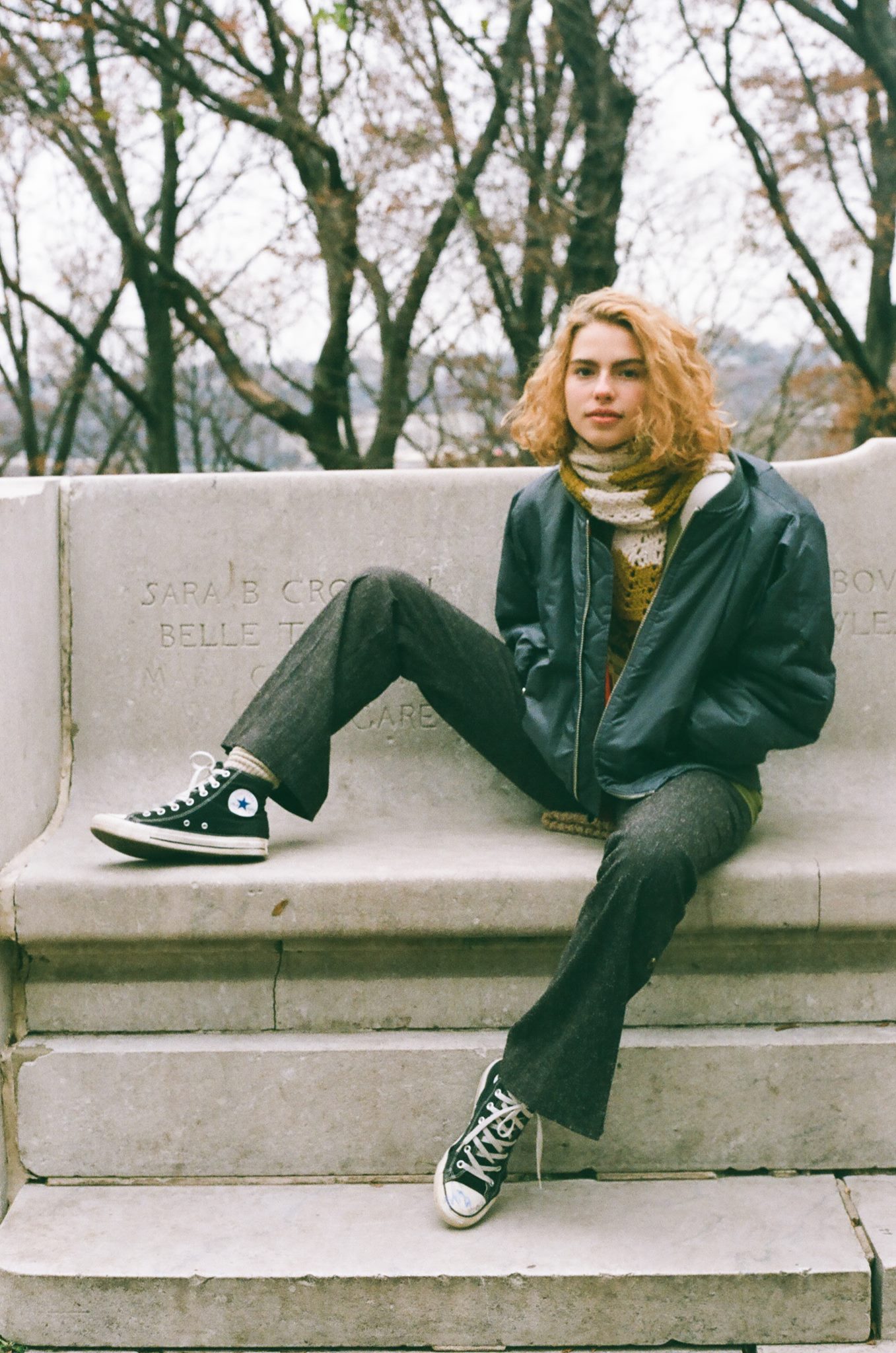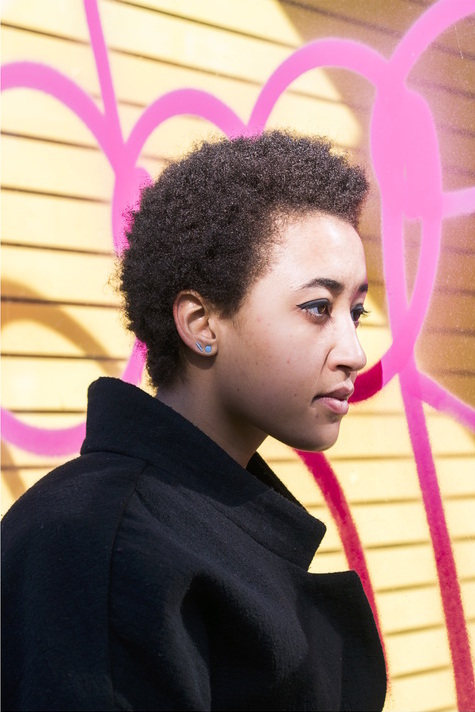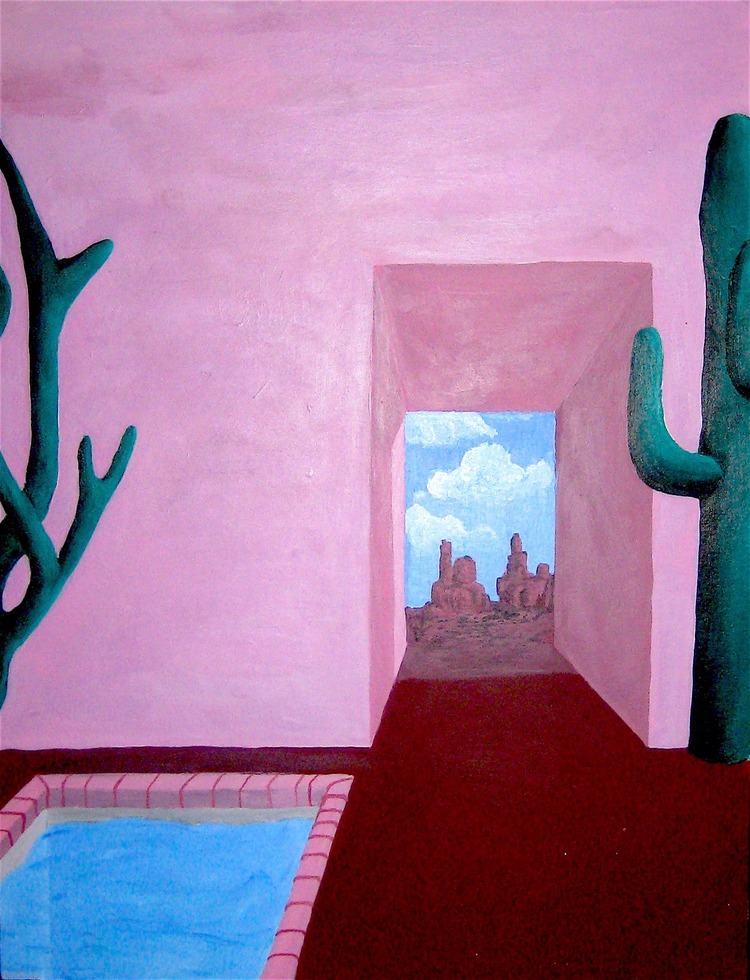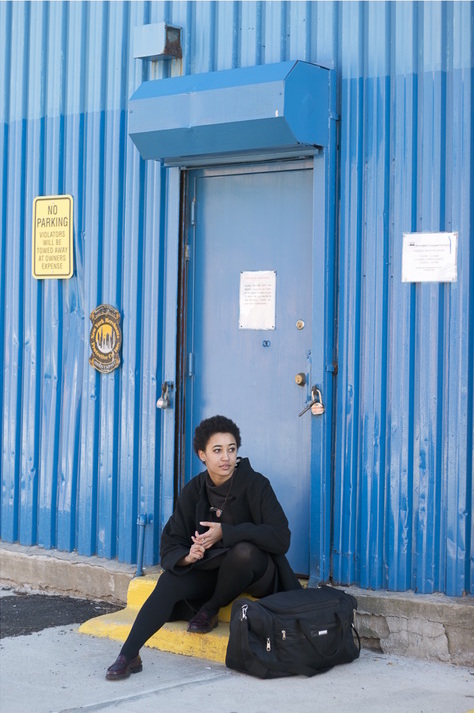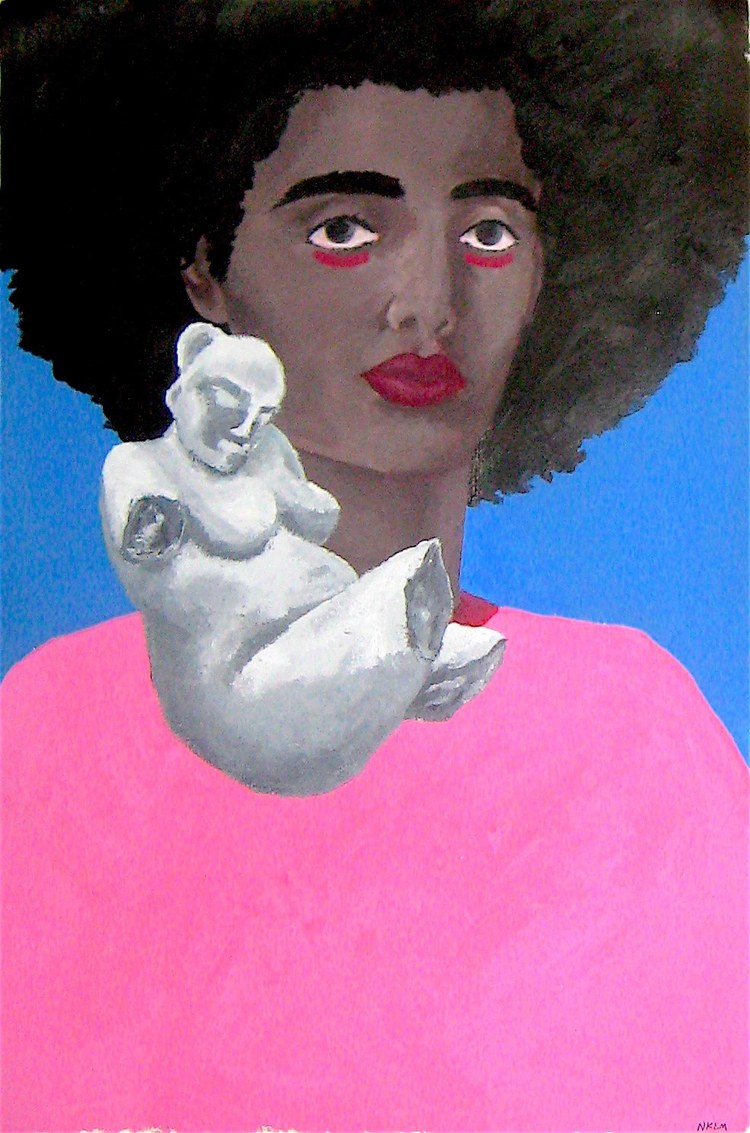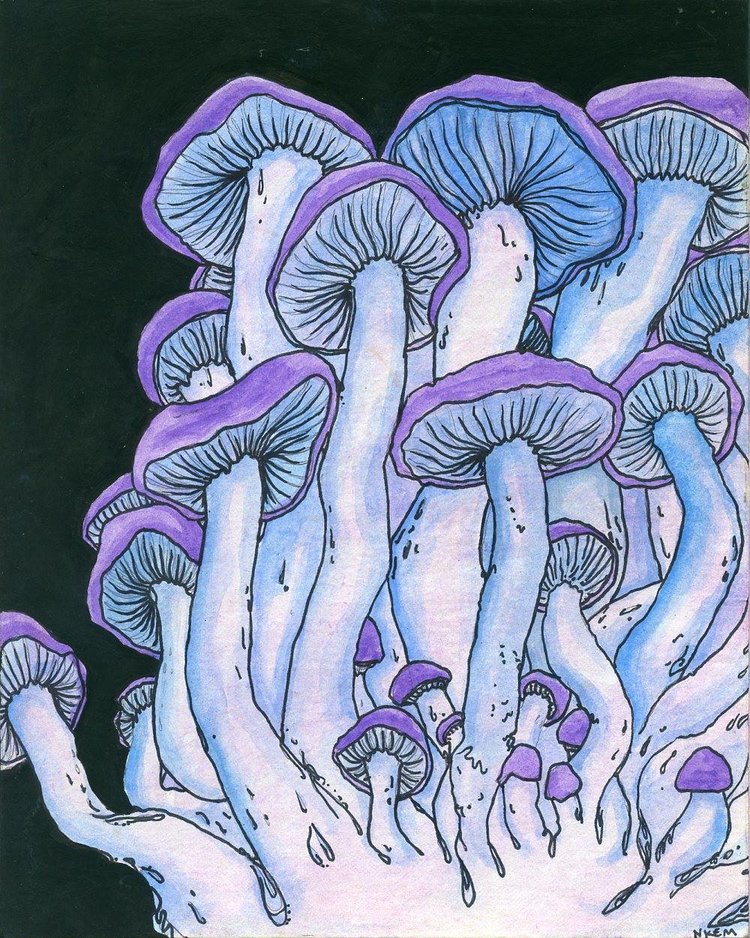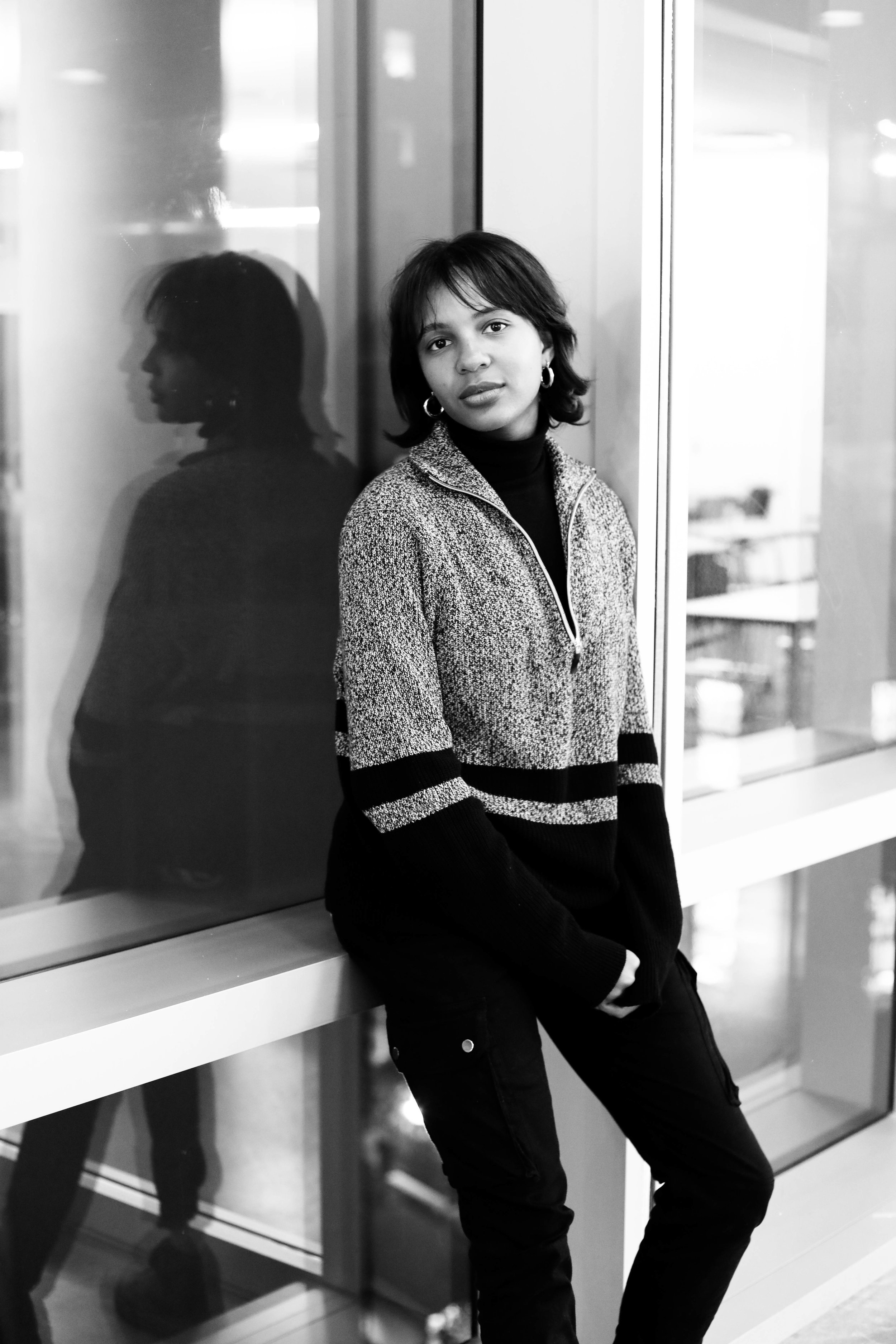
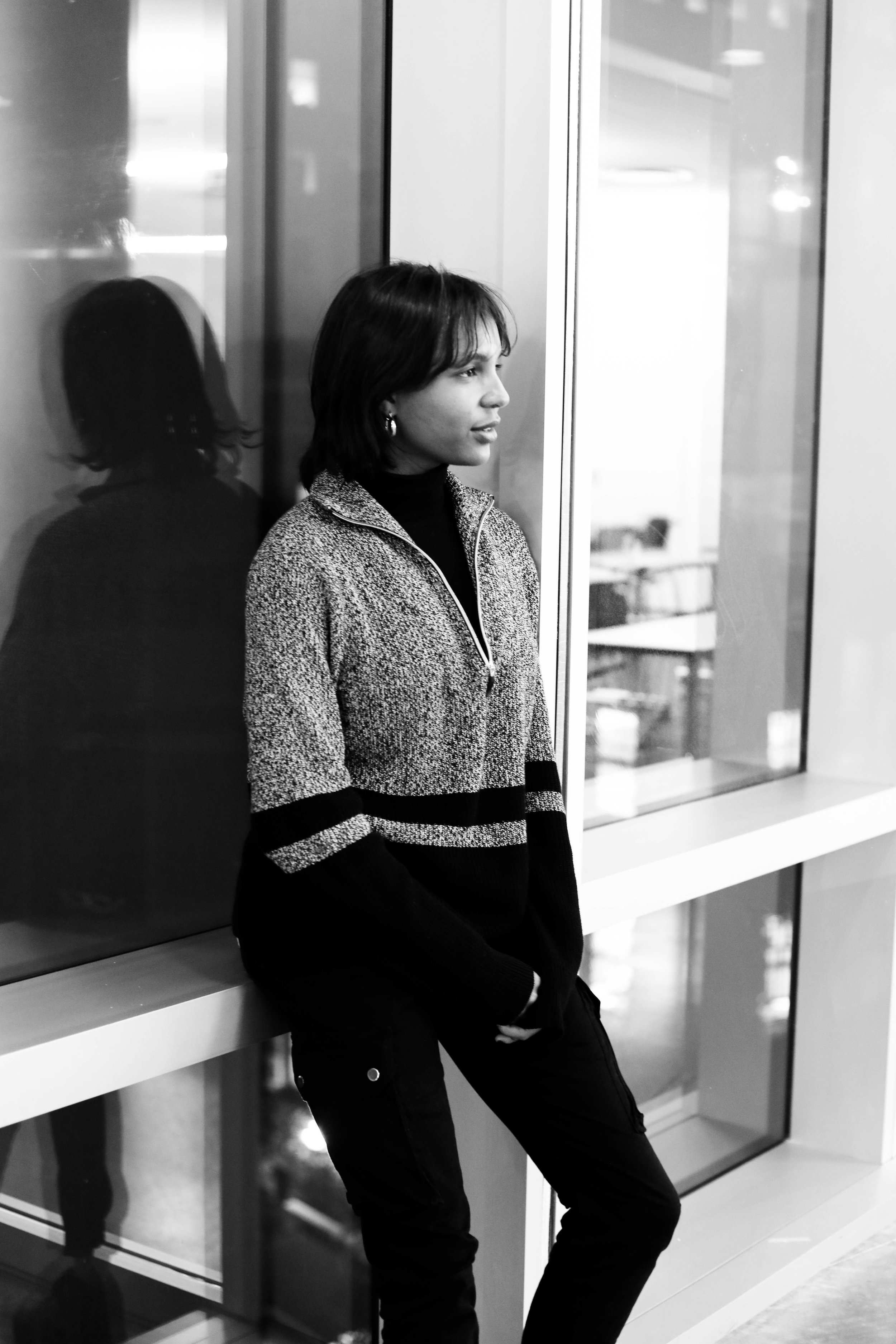

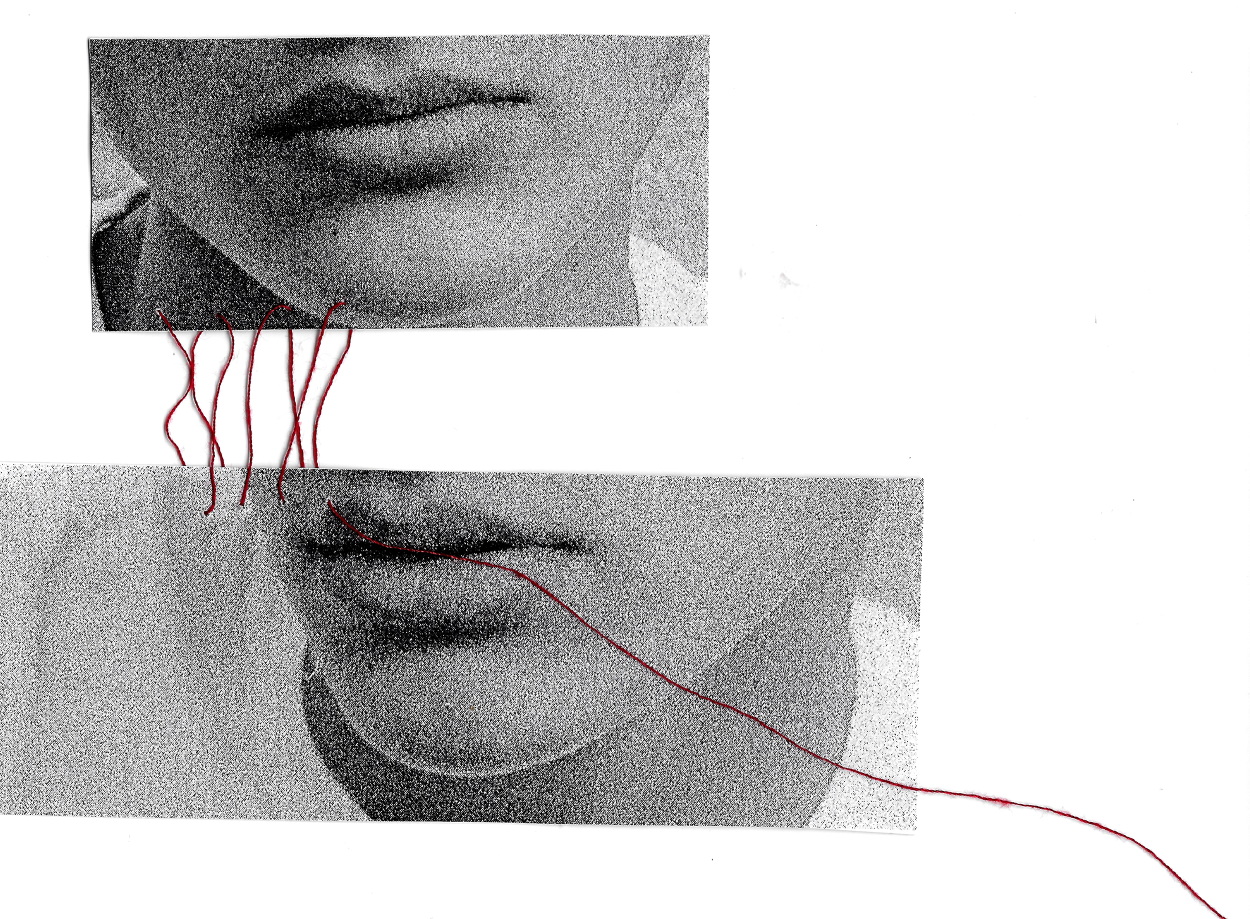

Photography by Aarushi Jain
Interview by Alexa Silverman
Ashby Bland is a sophomore at CC focusing in literary non-fiction and concentrating in visual arts. We met in the sixth floor of Diana to discuss mixed media, bedroom art, and favorite words.
Can you introduce yourself?
My name is Ashby Marie Bland. I am 20 years old. I was born in Orlando, FL. I moved around a couple times -- I lived in Orlando, Charleston SC, and Ft. Lauderdale, FL. I have a little brother and two parents and a dog. My family is Bahamian, Guyanese, African American and Native American.
Did you grow up in an artistic environment?
I wouldn’t say artistic, but I grew up in an environment where my parents were like ‘you can do whatever you want to do.’ My parents were really encouraging and free. They pushed me to do what I wanted; they would never tell me I couldn’t do something. I’ve always had a lot of interests.
When did you first decide that you were interested in visual arts?
Visual arts came my junior year of high of school. I never thought I could do art, was never really into traditionally learning how to draw. I took this class in high school called AP 2D studio art, that was when I discovered the collages I do. I saw a bunch of subject matter, photos and imagery, that I liked and started collaging them. Progressively I got more crazy -- I would paint on them, I would draw on them, I’d rip them … then my concentration became sewing. I would collage images and then sew on top of them, by hand, with thread. It would take hours. My fingers would be bleeding, but it would be how I wanted it. That’s how I got into the mixed media style. It allowed me to see that I was talented in other areas.
So is mixed media your personal favorite of what you create?
Yes, not necessarily with thread, but just the freedom to put whatever I want on a piece of paper. All my collages I’ve done recently, I’ve taken all those photos; the real reason I got into photography is to have original photos to collage. Having that mix of photography with painting, drawing, or sculpture making … It’s about me being able to make mistakes. All of my collages are never how I originally intended them to be. It’s a cathartic thing -- my art is purely indulgent. I’ll make art for a certain mood that I’m in. I let my hand freely combine things, that’s why there are rips and shit because I’ll mess up and think, ‘well, I don’t want this anymore and I can’t get rid of it so i’ll just rip this piece off.’ Then there will be a hole in the paper. It’s very reactionary.
I love photography and I think it’s great, but whenever I take a photo, I don’t think it’s good enough. I can do something more -- why not? Take a photo of a person: why not print it out and add something else to it? I always end up layering photos or ripping them or adding a color. That’s me being indulgent and not satisfied with anything– I’m always changing things. I like playing with my hands. I’ve always been into design, creative directing, knowing where to put things … I’m really not doing anything other than just putting things places. The act of putting things places is what art is. You decide. If I take a photo, I don't just want to leave it on my iPhone or computer, I want to print it out and have a physical piece of paper. I could punch a hole in it and I don't think it looks worse or better, just different. It allows me to put my energy in a certain place. There’s a versatility too — I can have the original photo and the one that I edited a bit, and I feel happy with both.
Where do you draw your inspiration from?
I’m a big lover of words– my other favorite medium is writing. Last year in Poetry, we studied this poet called Myung Mi Kim. She has this poem called “Accumulation of Land” that has short statements set up in columns and rows. It’s a surrealist poetry thing; what inspired my surrealist poetry. I don’t always want to convey a meaning or theme, just a feeling. I become really obsessed with certain words because of the way they sound or look. For a while I was really obsessed with the word “degenerate.” Not because of the definition, but because I liked the way it looked and the cadence and flow within the word, I thought it sounded like a rollercoaster. I wanted to make art that embodied the feeling that the word gave me.
Do you have a current favorite word?
I started learning French last semester and I like ‘comme ça’ which is ‘like this.’ It’s a cool transition word and I like the way it sounds ... I think “cargo” is a really good word to describe baggage and things you carry because it sounds scientific and technological. I like the contrast between words that sound really scientific but describe certain emotions.
I like “gunwale”, that little boat that has shallow sides. If you look it up you’ll see the boat has chains hung over it … you’ve see in movies where they’re in a boat and they have these chains hung over that are tied to a buoy, and they pull the chains back into the boat and it makes a crashing sound? When I got to that line in [“The Writer” by Richard Wilbur] I was like fuck. I could hear the chains hung over the gunwale that she was pulling metaphorically. “Annex”, I think that’s a cool word because there’s two n’s in it. What else? I really like the word clientele. It’s so sharp … this is how I think. Certain words have certain feelings and sounds and color to me ...
Do you have synesthesia?
I don’t really like to label things. We’re in a generation that wants to label everything; some things just are. I was obsessed with this name Yusuke Urameshi from this rap song that I heard, it’s also the name of a character in this anime called Yu Yu Hakusho. That name is so sick. The way it’s said in the song has this cadence that’s badass; it almost sounds like it’s not a name, it’s one word … Everything is inspired by words.
Where do you work?
Famously, I do my work in my bed. I used to have an art account in high school I named “Bedwork” because I did all of my collages sitting in my bed. I would have all these pieces on my bed laying out. I didn’t need a lot of space. All of my collages are tiny, smaller than a sheet of paper. Although I was comfortable with this in highschool, now I wish I could expand my collages and make them bigger, show that I can work in a large studio. If I’m writing, I'm on a computer. If I’m doing photography, I’m out or in the dark room.
Tell me about the series on your website, “A Pest to Ears but Attest to Nothing.”
“A Pest to Ears but Attest to Nothing” was the last line of one of my poems. [The subject] is my really good friend. We went to a graveyard in Florida and I took a bunch of pictures of him. He inspired me to do film photography -- I have a lot of art of him because he was my muse back then. His lips are really nice. I liked the movement here, the way they’re turned. I picked these two pictures out, and I didn’t really want them on top of anything, so I sewed them together loosely. I’ll scan things a billion times until they come out perfect. I’m really into fuzzy incoherent photography with a lot of grain. It’s warmer. Because I don’t use a lot of colors, I need something that’s relatable. I love the texture.
Why do you find yourself working with black and white film?
Color is limiting. When you see color photography, you pay attention to how the colors interact and not the form. It’s a distraction. Also, when there’s color, it makes me feel anxious about collaging. I don’t want my work to be colorful because when there’s a lot of color you’re not paying attention to what’s actually there. [In this picture] he has tan skin, a white shirt -- that wouldn’t be too bad, but the background is green. I’d never be able to put a red thread through because then it would be fucking Christmas, you know? There’s too many associations with colors that make me feel like I’m trapped. The grayscale allows me to do whatever I want.
I see a lot of red in your work, is this color significant to you?
Yes. Red is a really powerful color; it makes me feel threatened in a way that contrasts with the softness of the photos that I take. A blue wouldn’t be strong enough, a green has too many associations (leaves, trees). There are not a lot of things I find that are naturally that bright red, so it contrasts with the basic nature of the black and white. Also, I have a lot of blood in my drawings and I’m drawing that red.
Tell me about your children’s book.
The first chapter … the entire concept, the title, I wrote when I was four. Obviously I spelled everything wrong and had horrible grammar, but the story was there. “The Girl Who Tried to Catch the Moon.” Every couple years I would find it … I moved three three times so when I would clean out my room I’d find my original draft sitting there and I would go on my computer and rewrite it. When I was eight I wrote it again — still with bad grammar, but I did it. When I got to 13, I typed it out. My parents always knew I had it and before I got to college my dad [said] ‘we need to publish this’ and I was like ‘okay, sure.’ I got it published in September of last year. I guess I don’t really see it as that big of a deal because it’s just something that loomed over me my whole life. I always had this written and didn’t think it was that important. Also, I’m not a children's writer, so I think it’s funny. Knowing that I was thinking about this when I was four is endearing and cool, but … my writing now isn’t anything like this.
How does it feel to be a published author?
It feels like nothing, really. [laughs] It doesn’t really do anything for me; I just like that I put something somewhere … I was never able to growing up because of Tennis. When you play Tennis at a high level, you’re not allowed to make mistakes. The tiniest mistake -- centimeters -- will change your life. Knowing that made me feel threatened. Art was an outlet. Who gives a fuck about three centimeters? I’m just gonna rip the whole thing and throw this paint on it and throw it in the trash and spray paint it. It’s freedom.




















